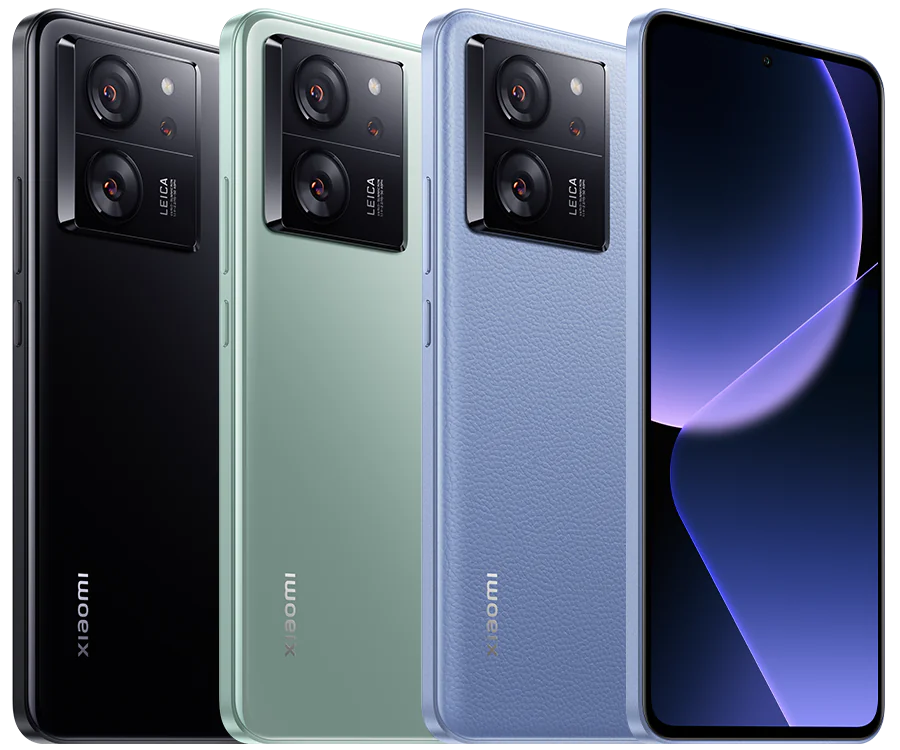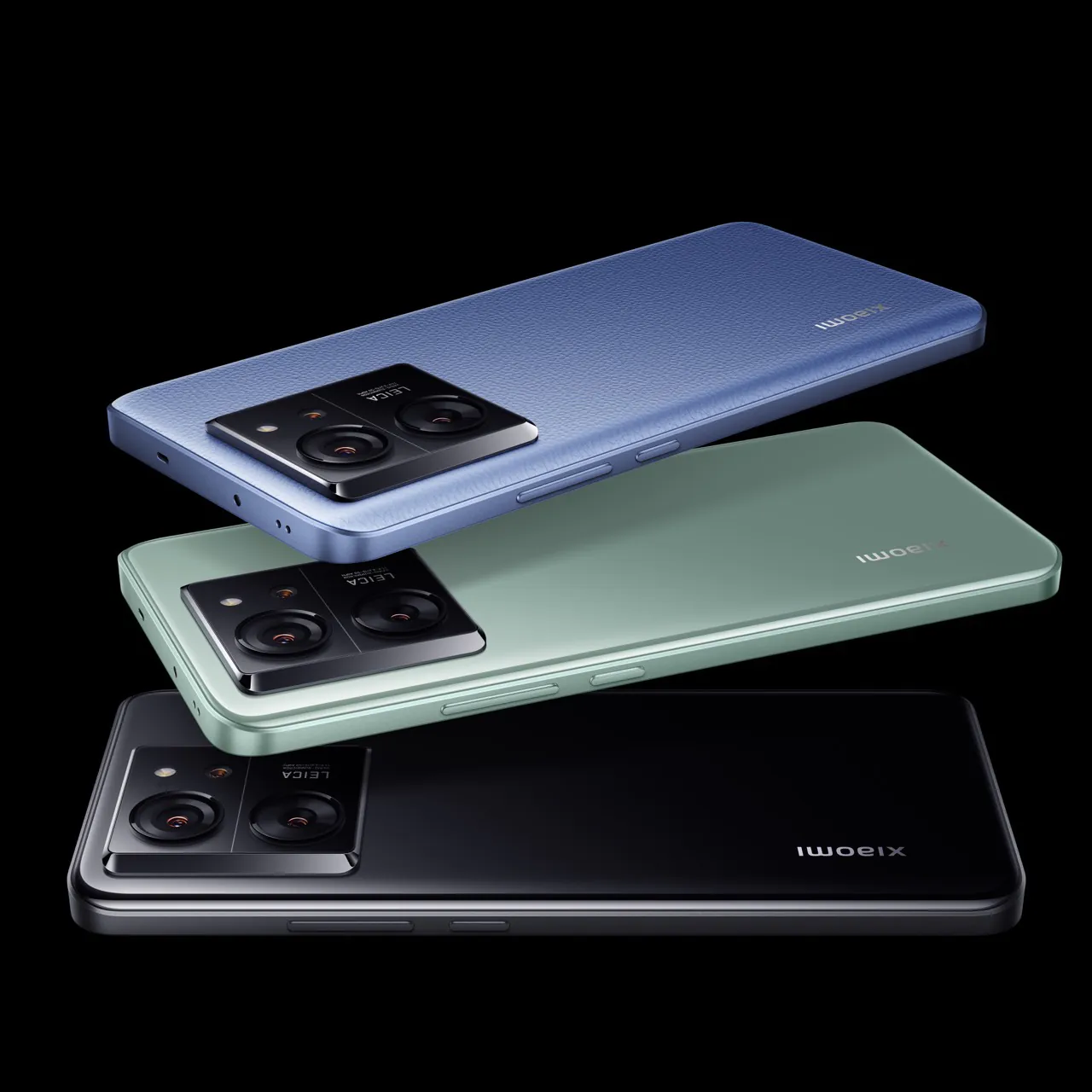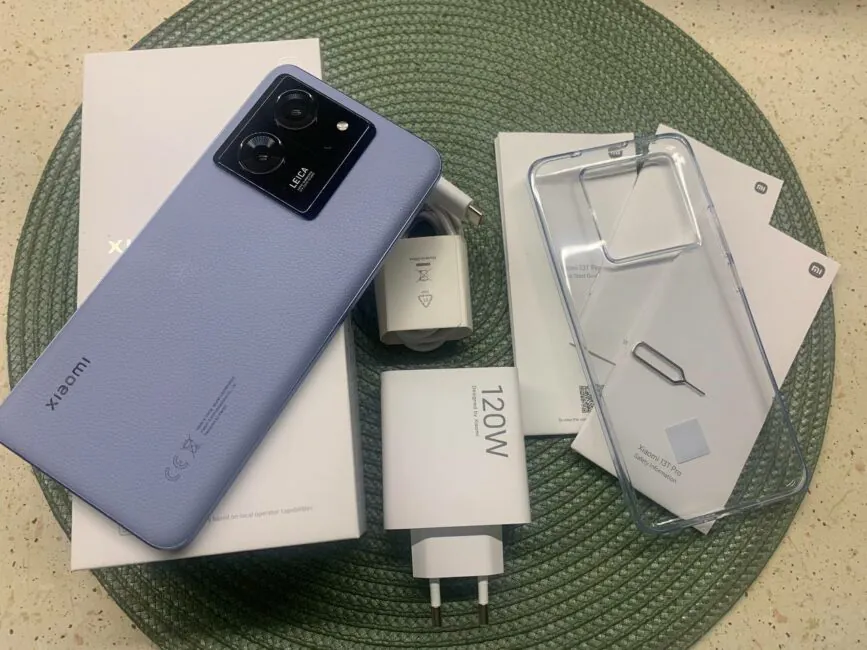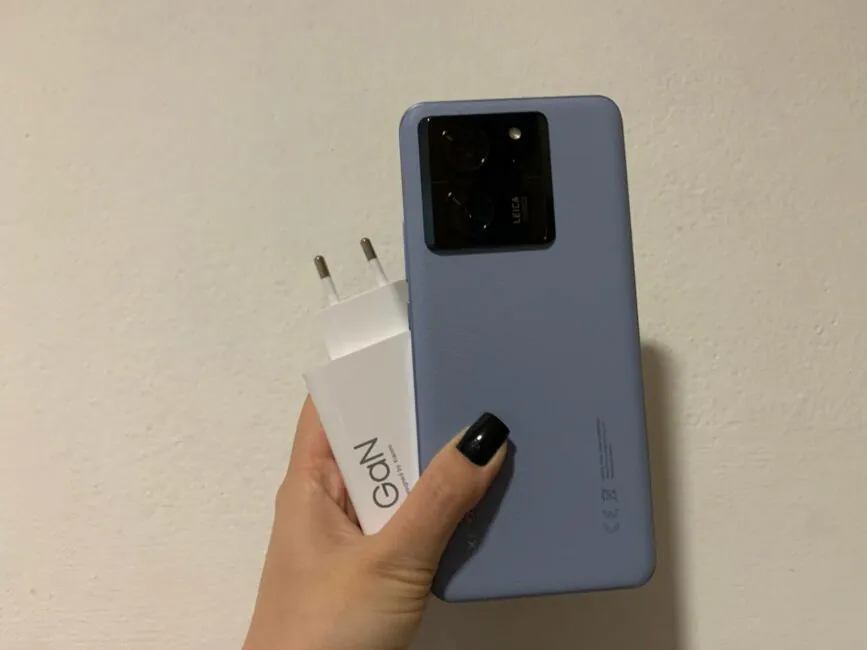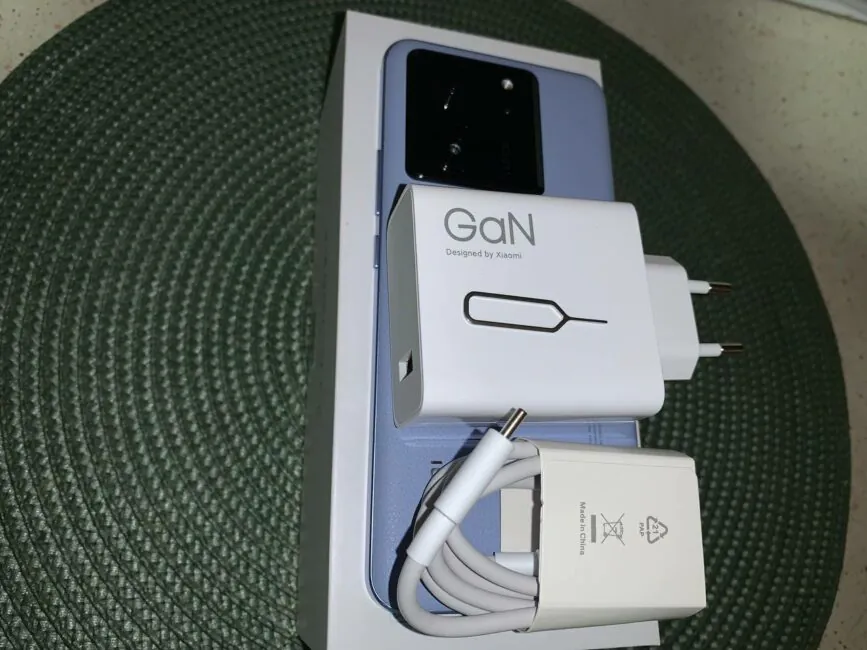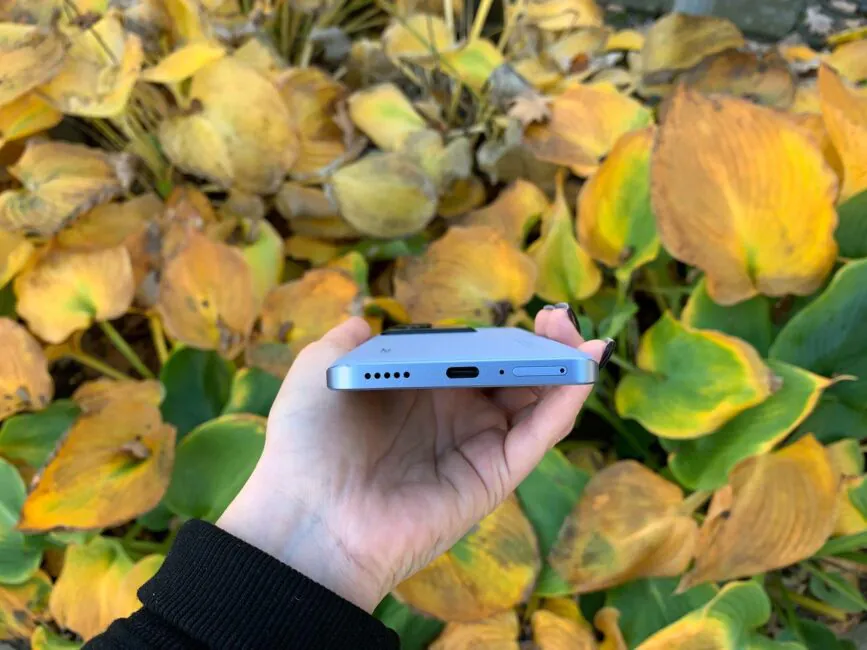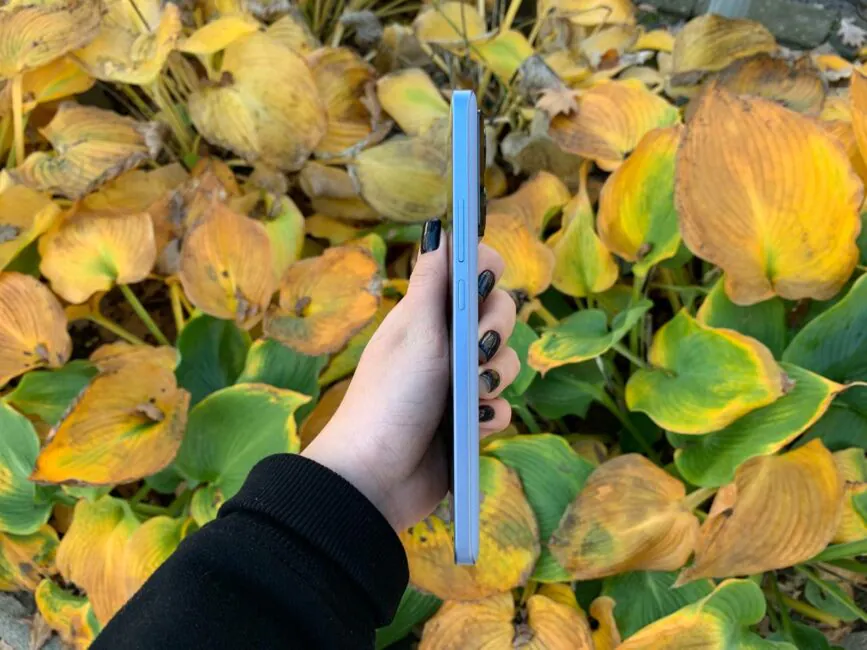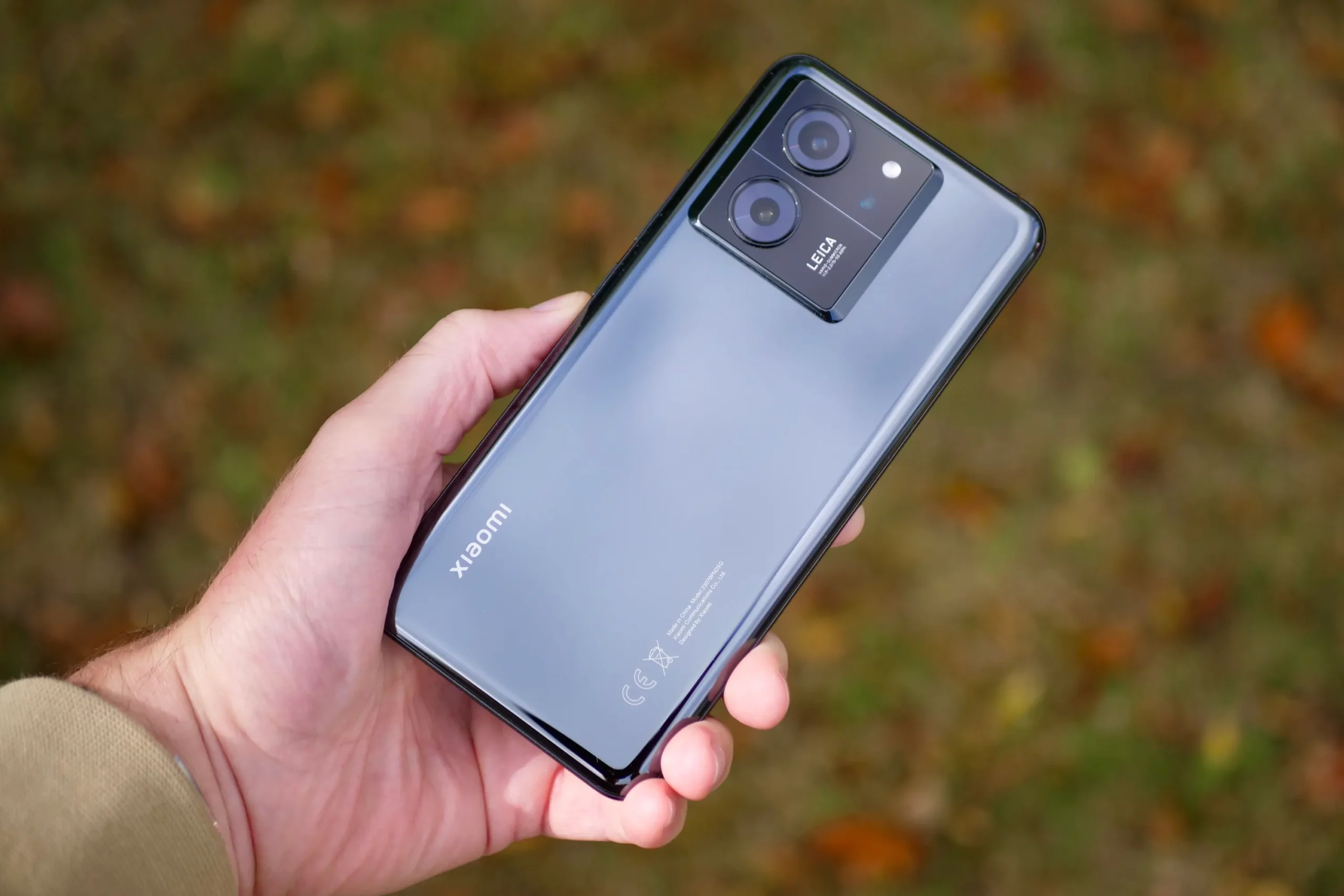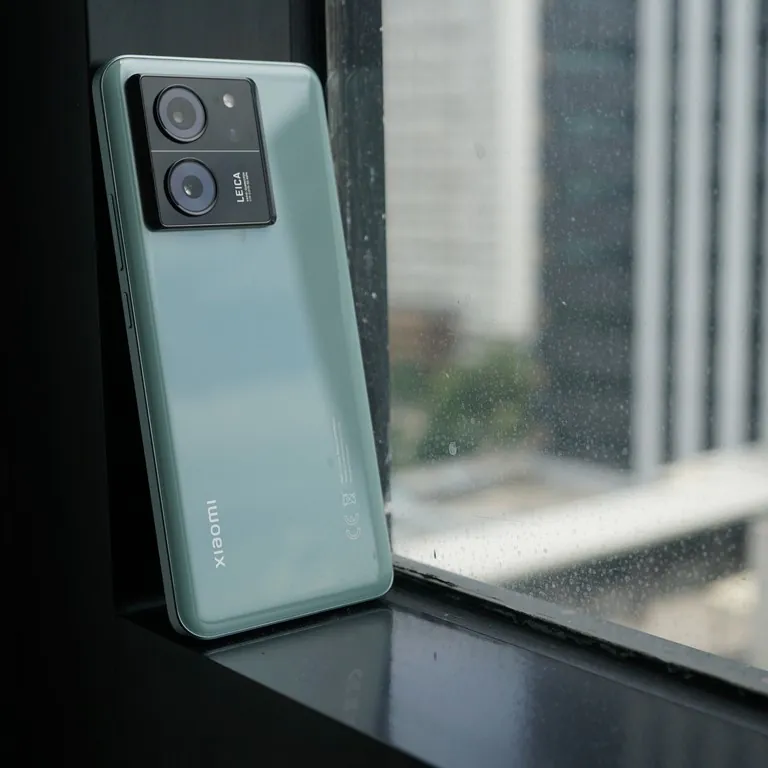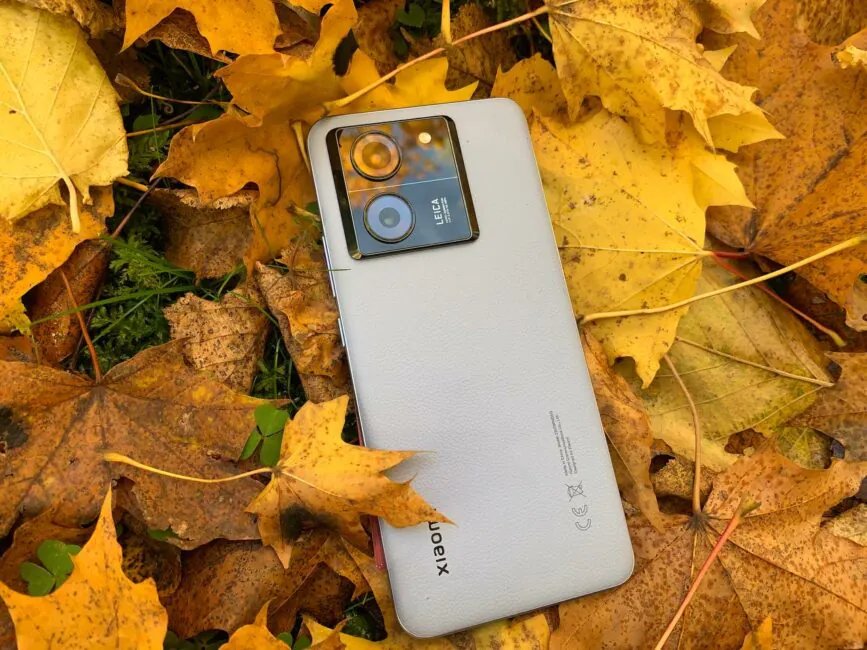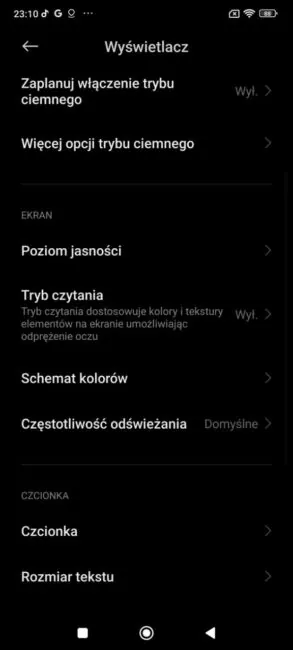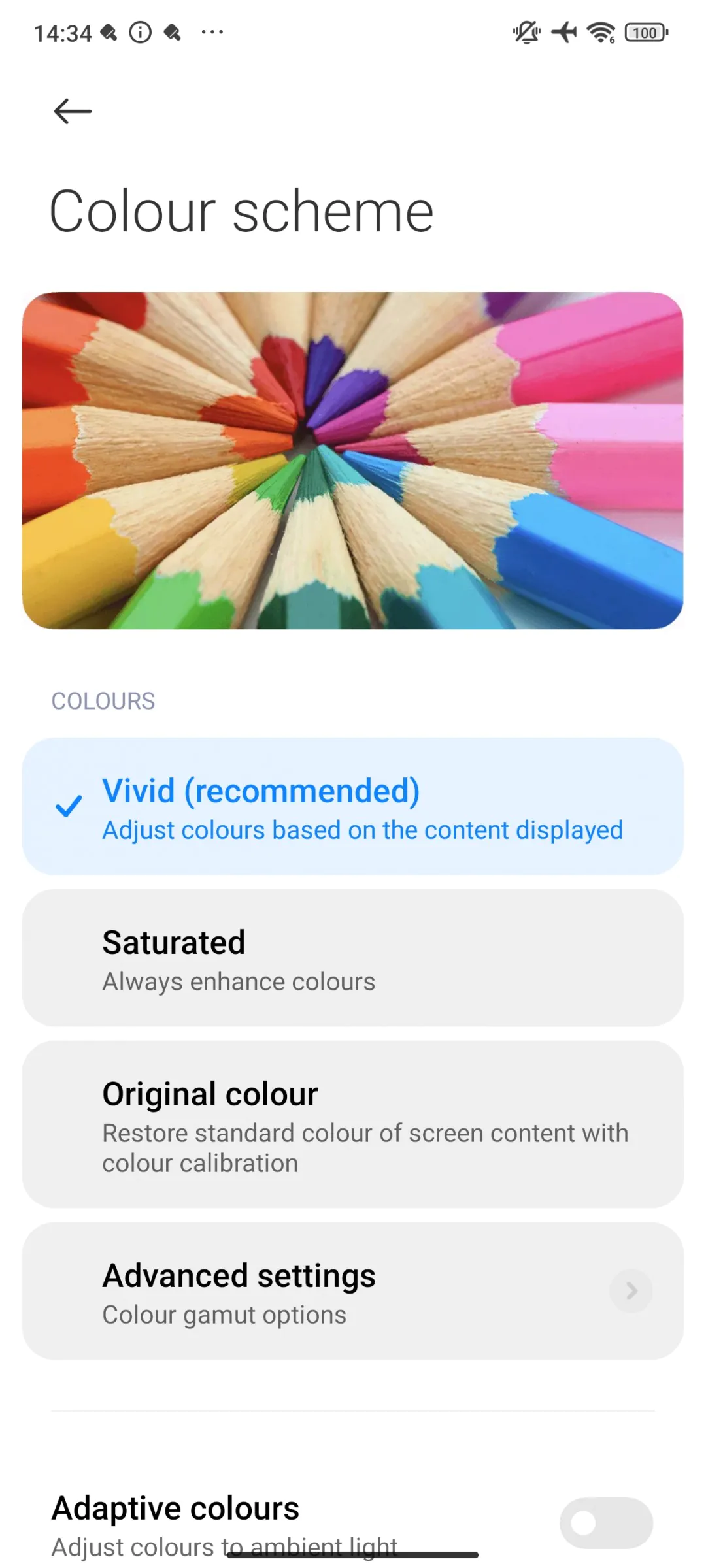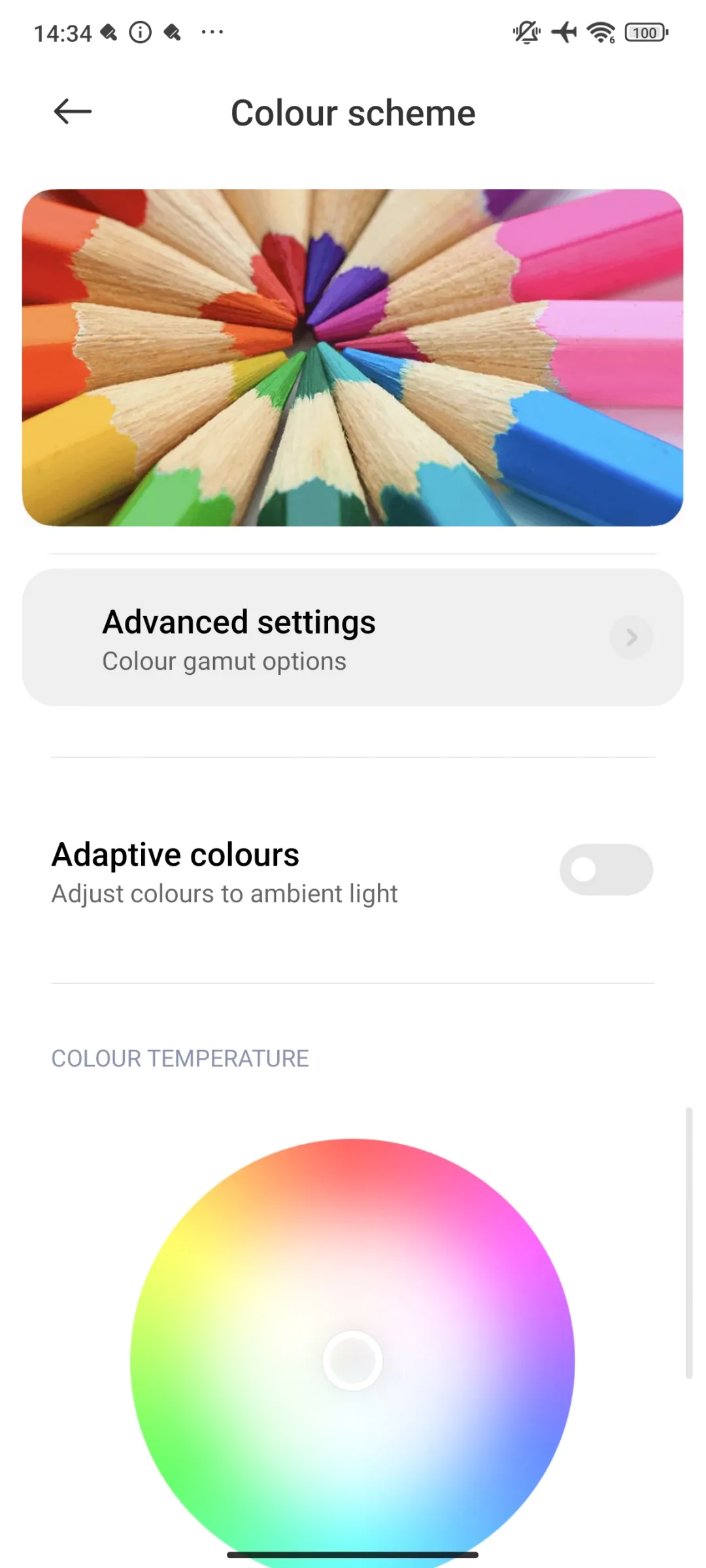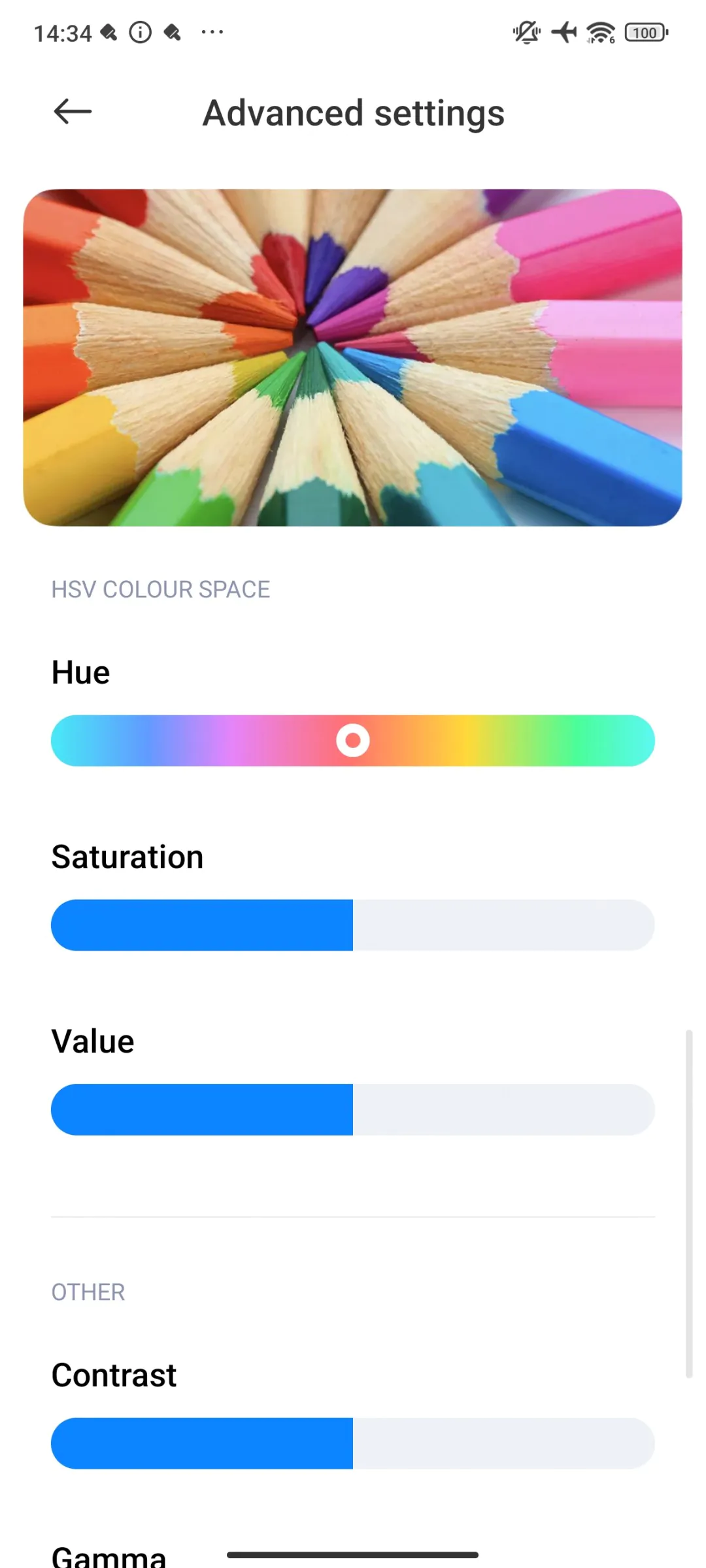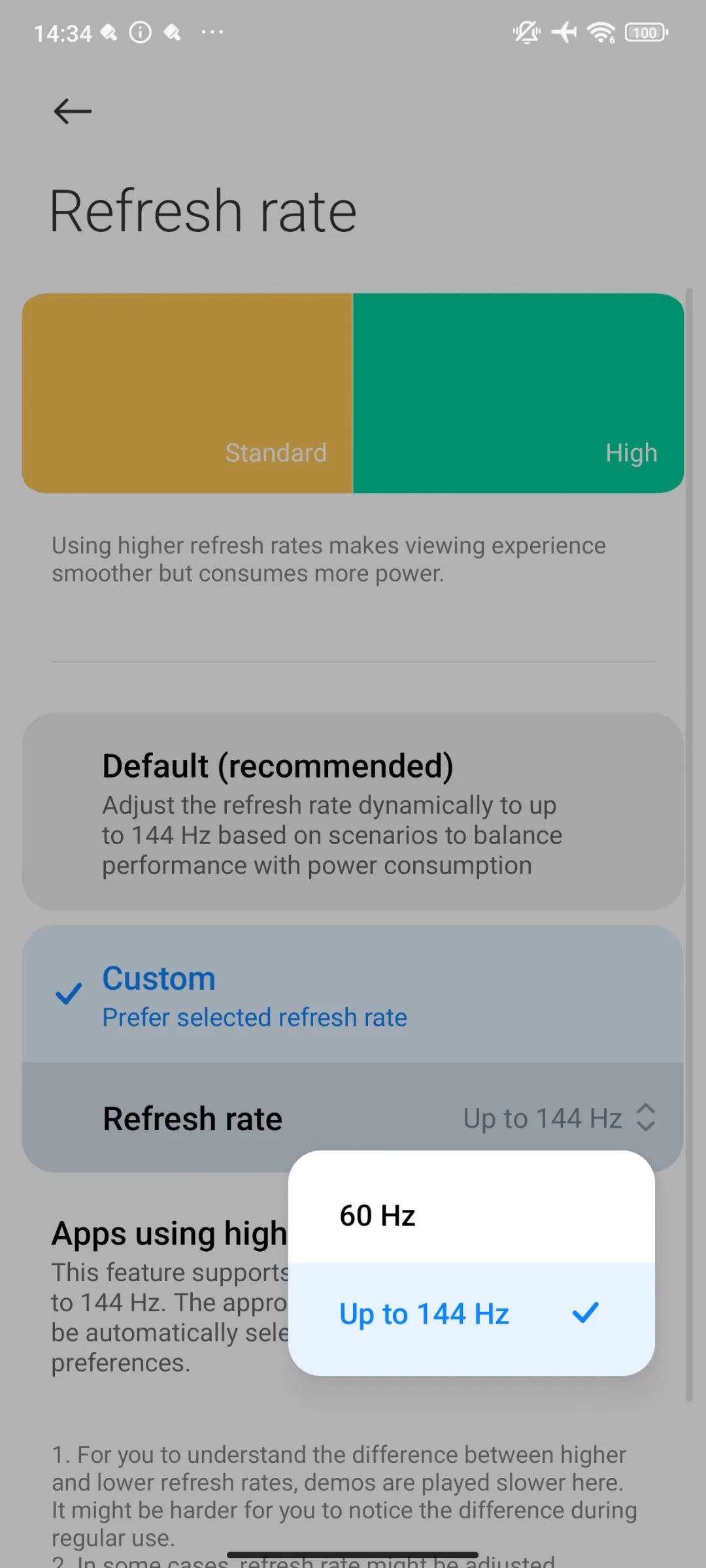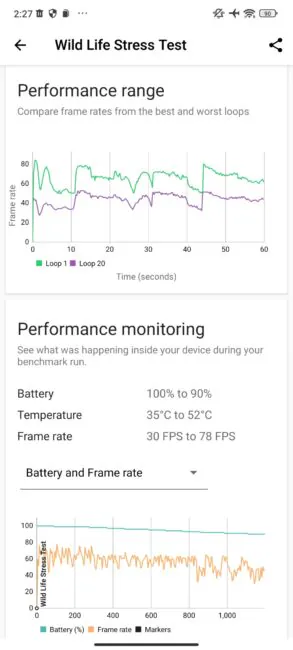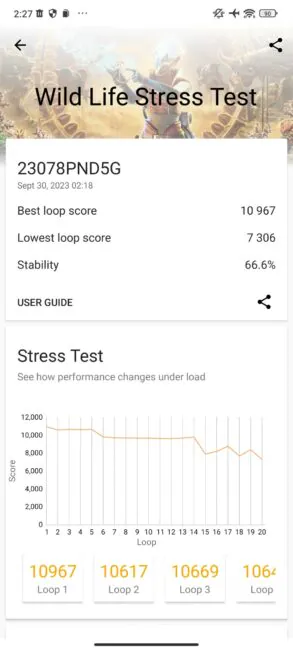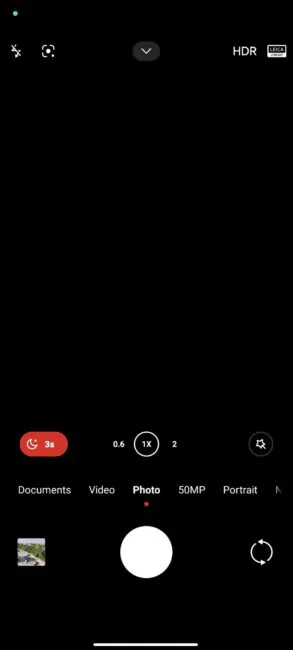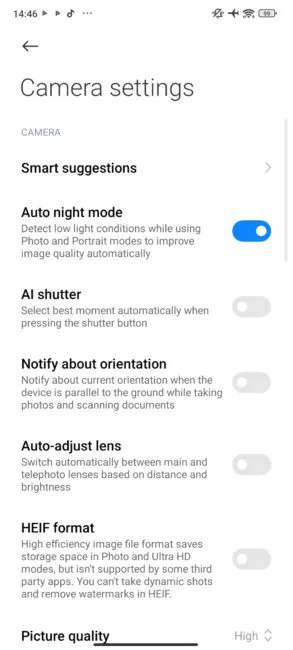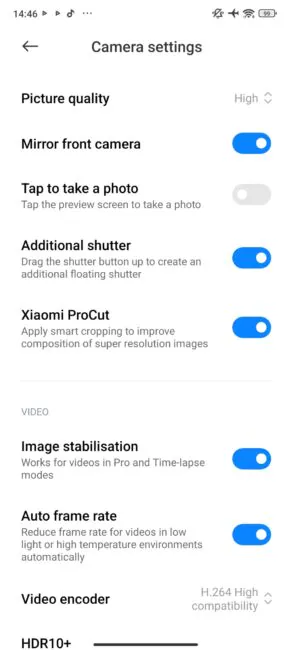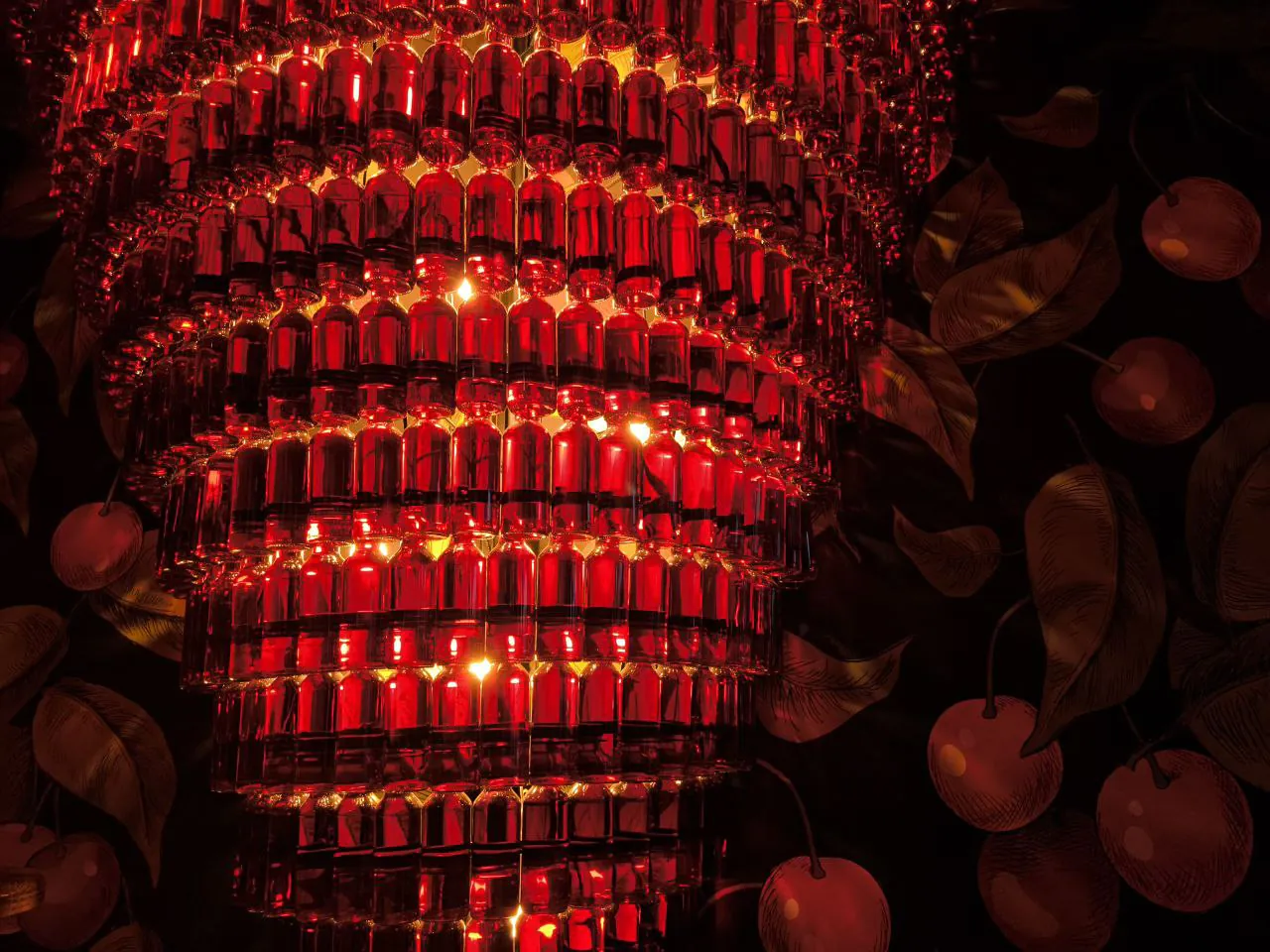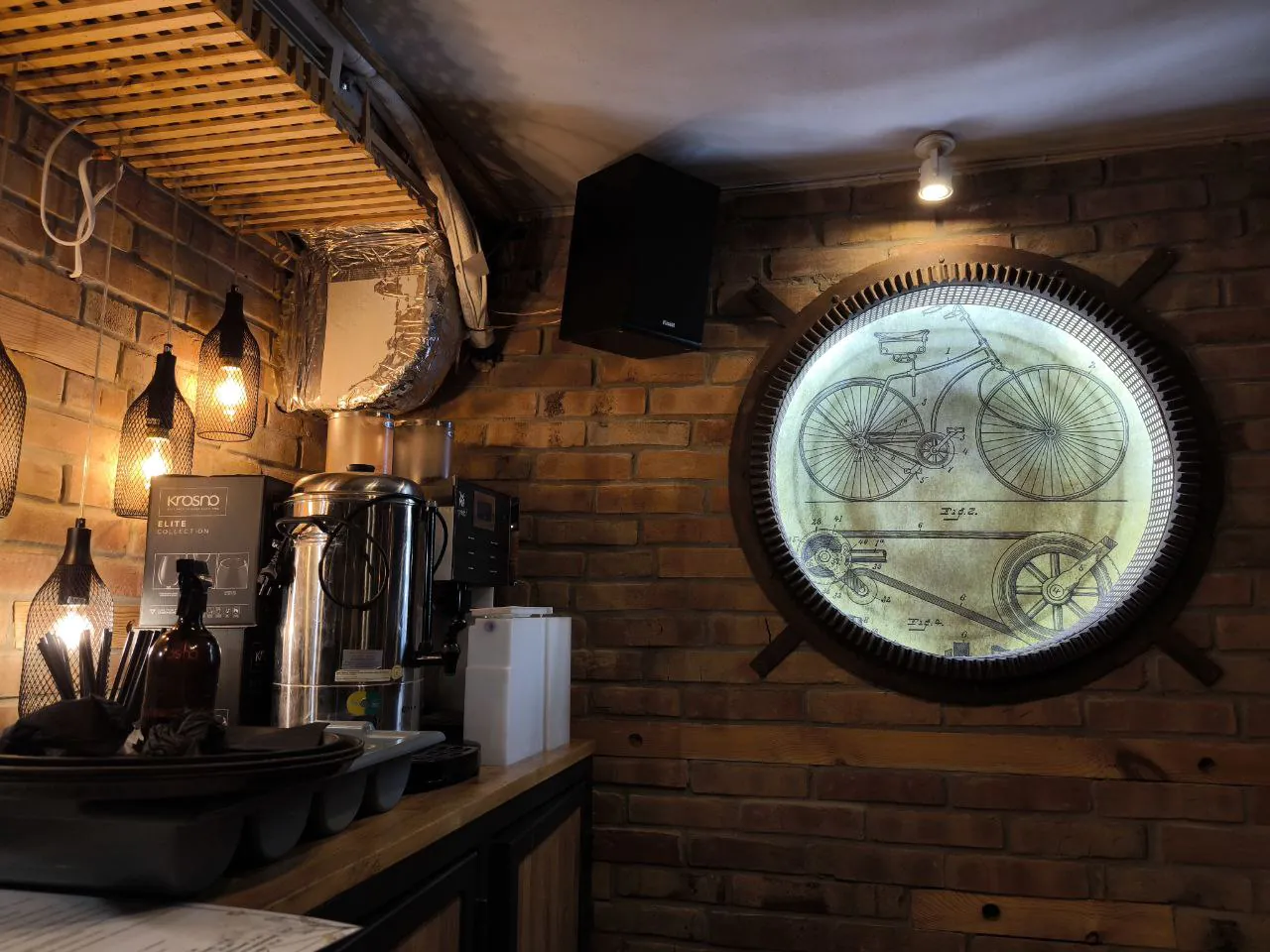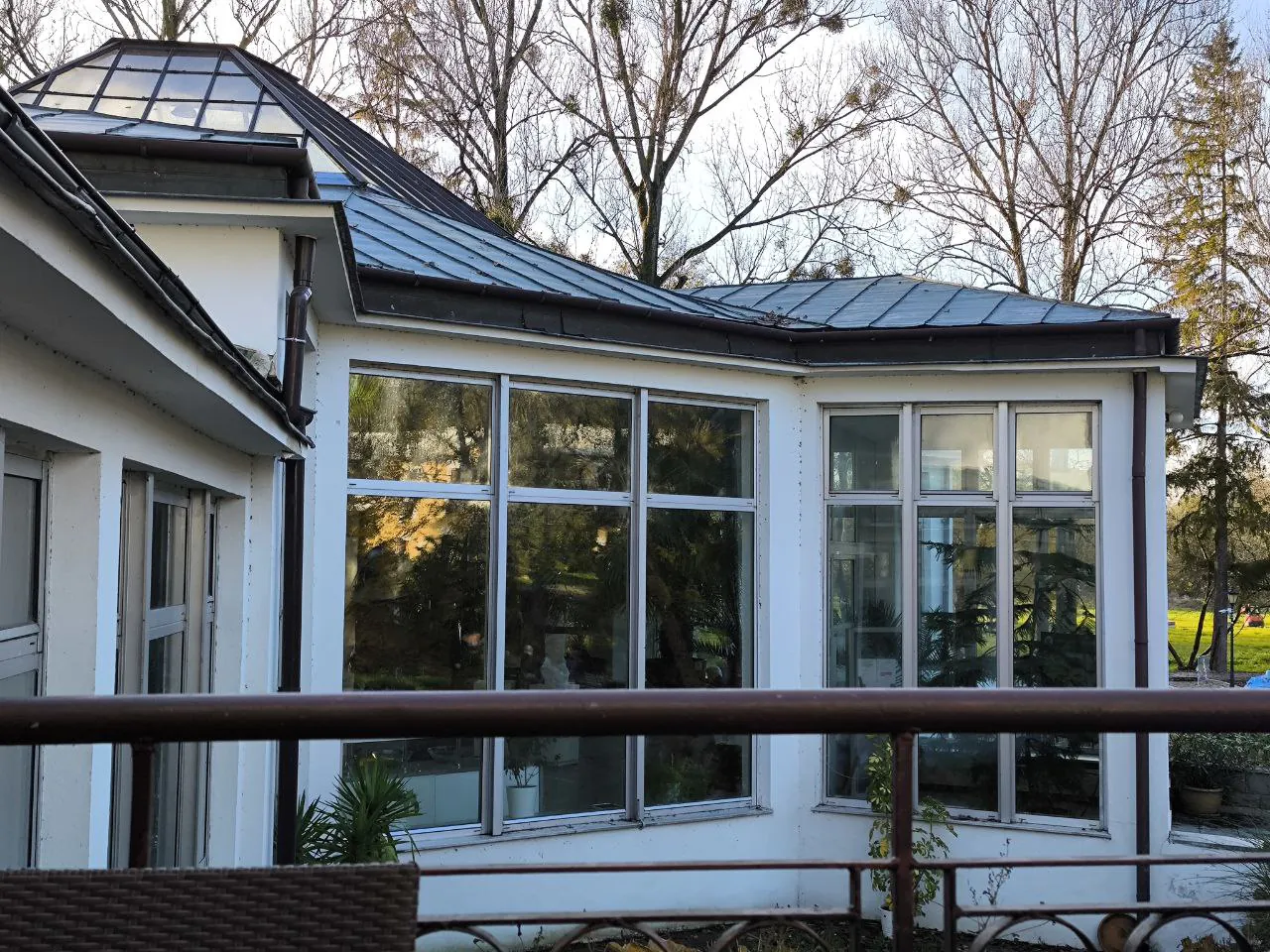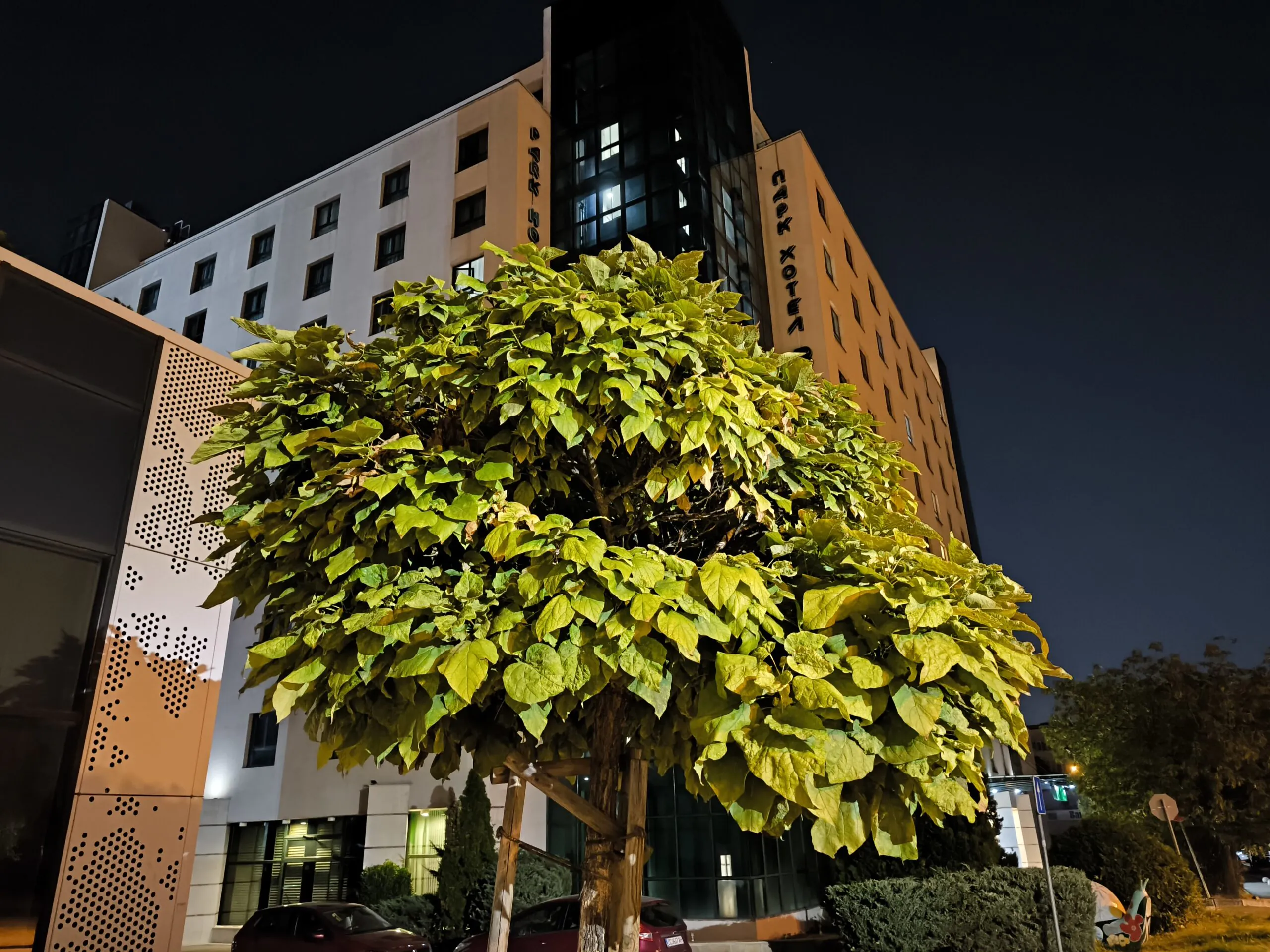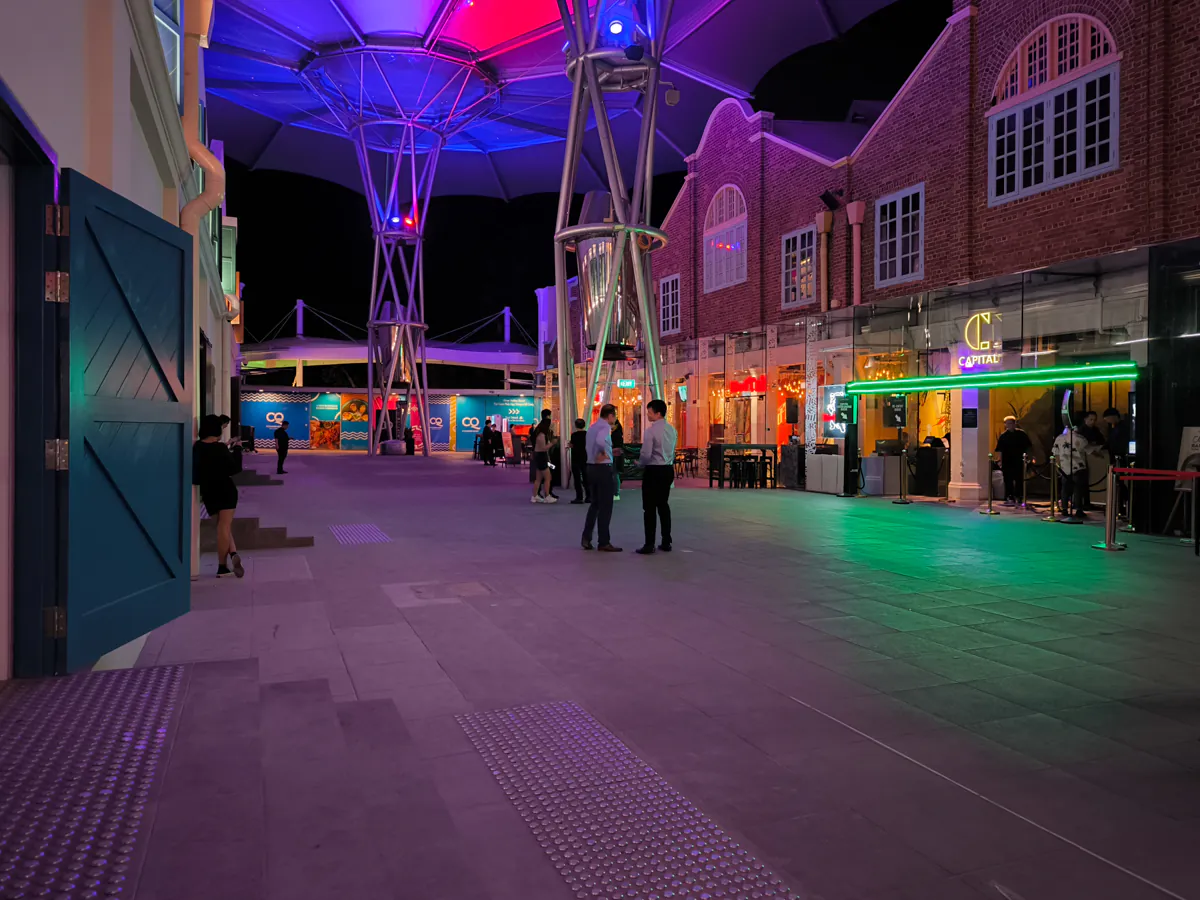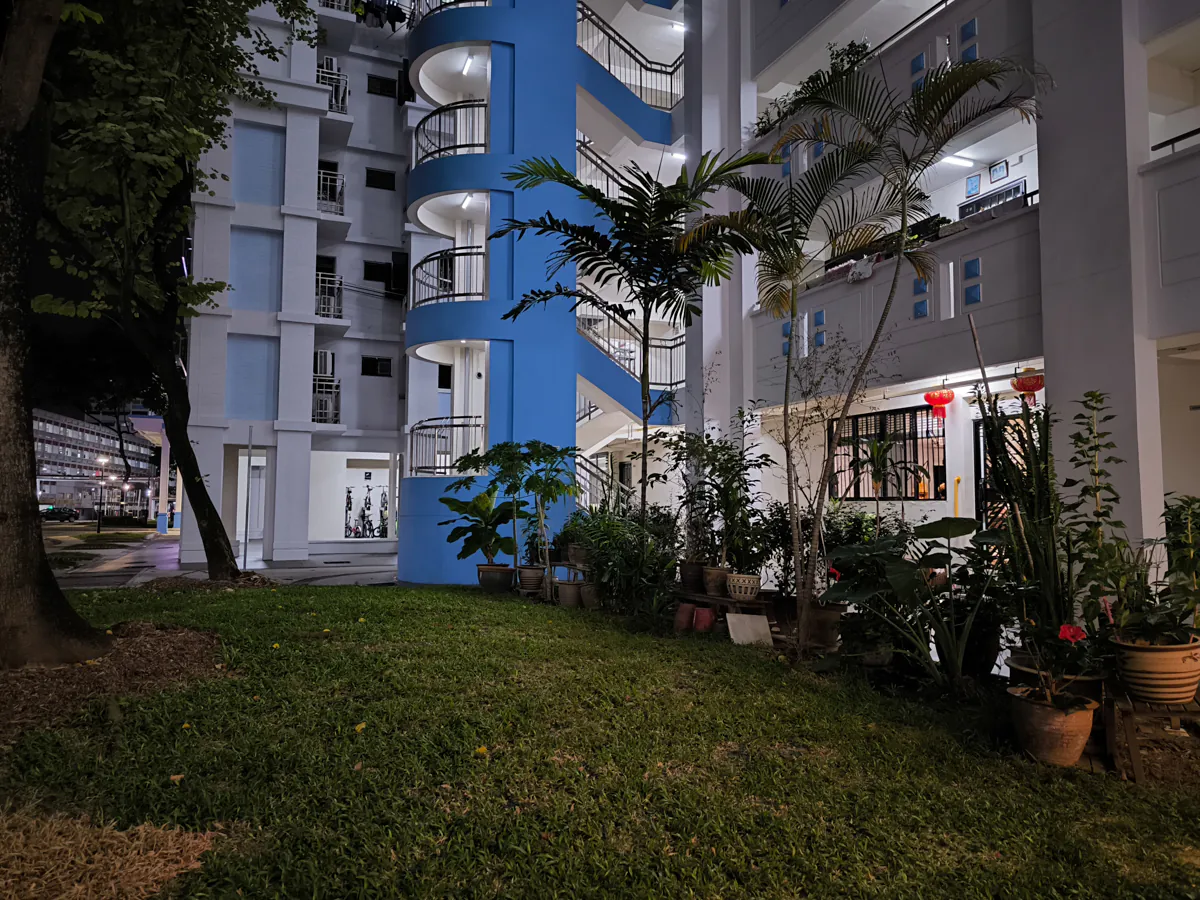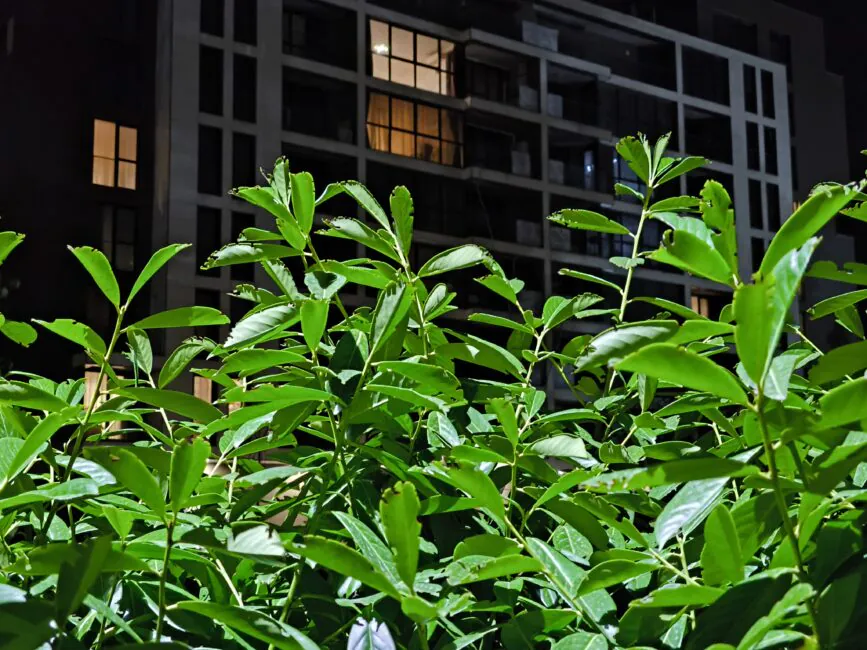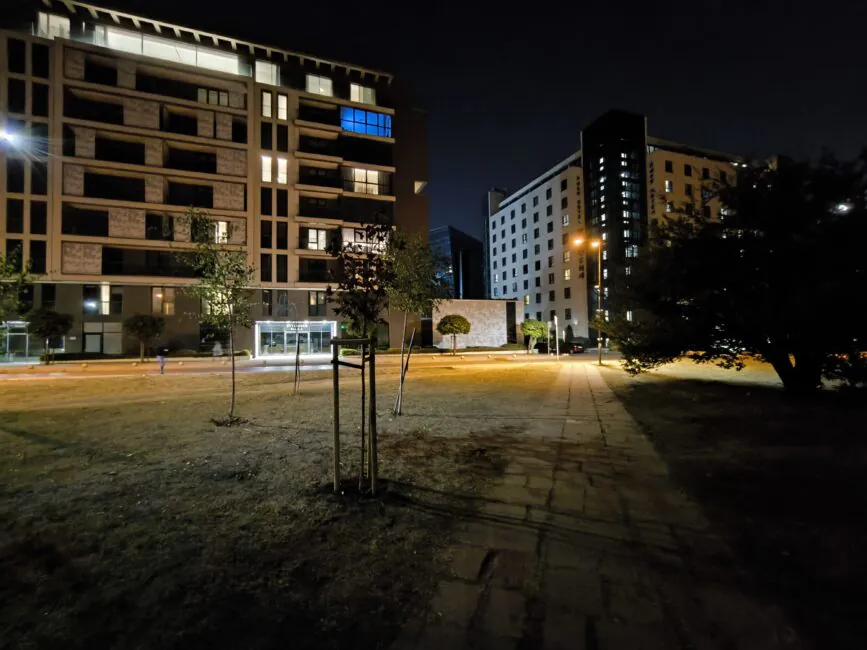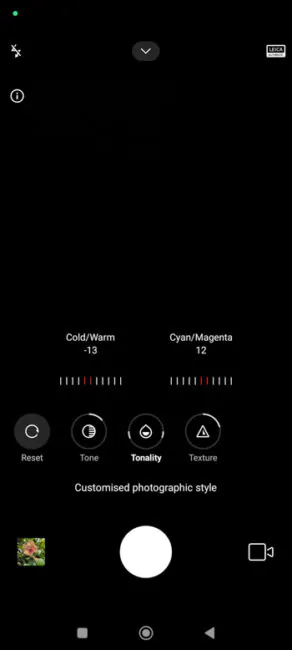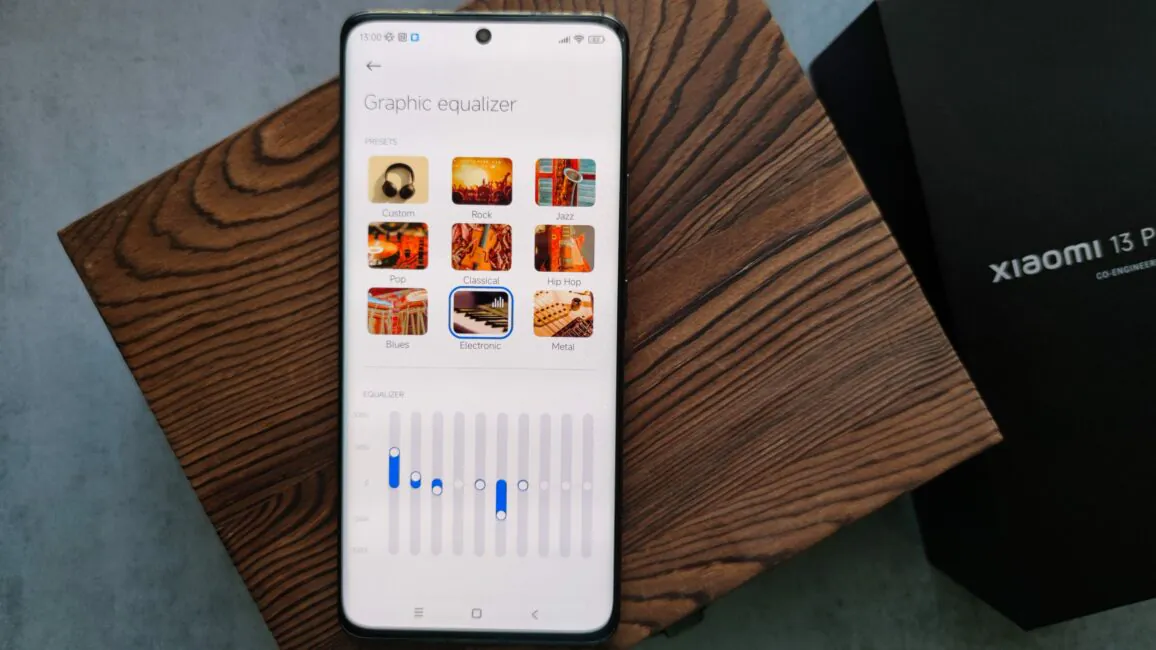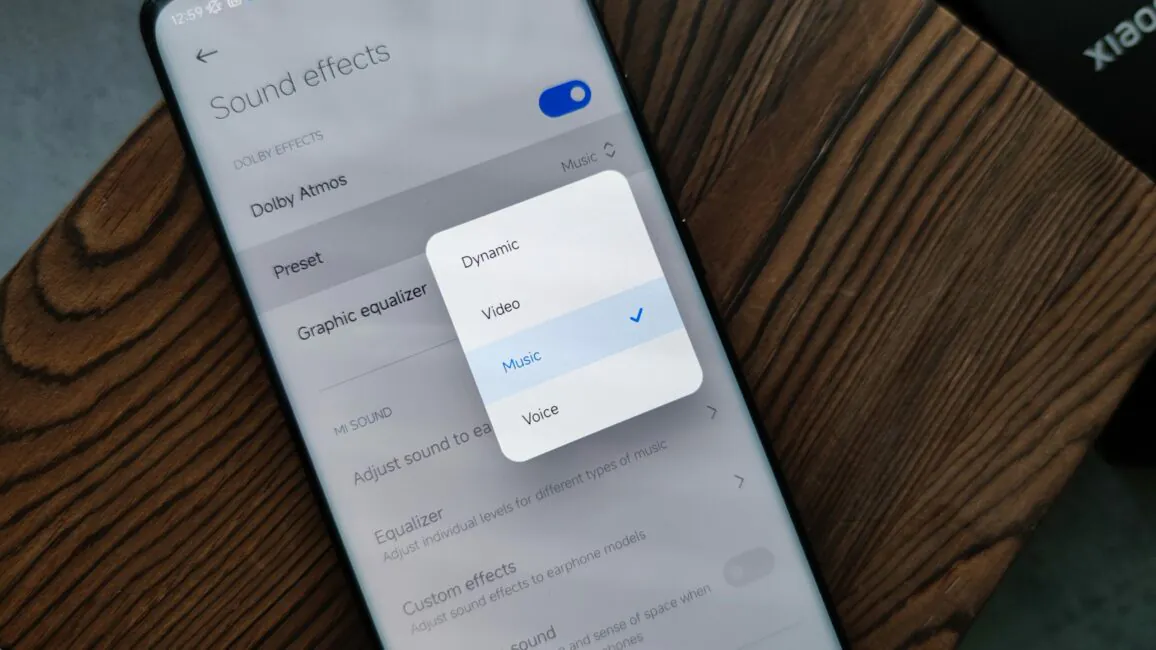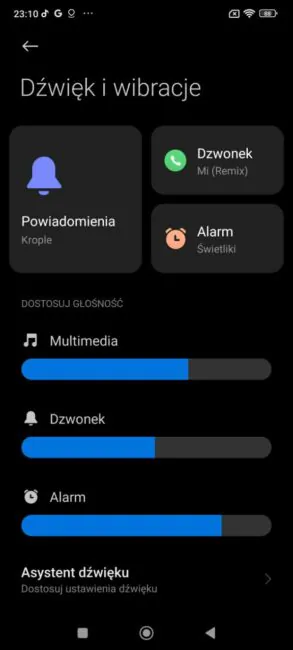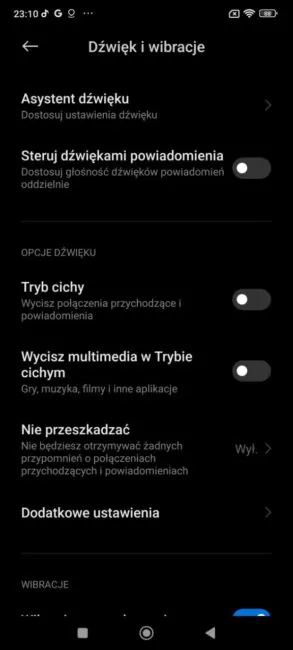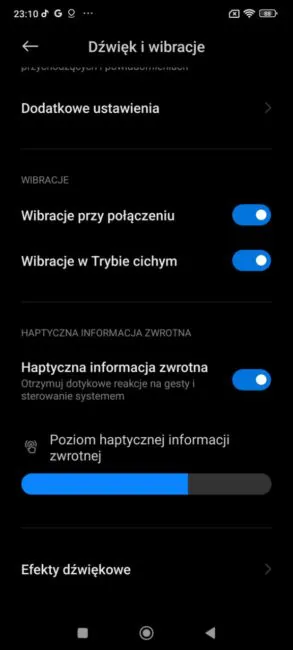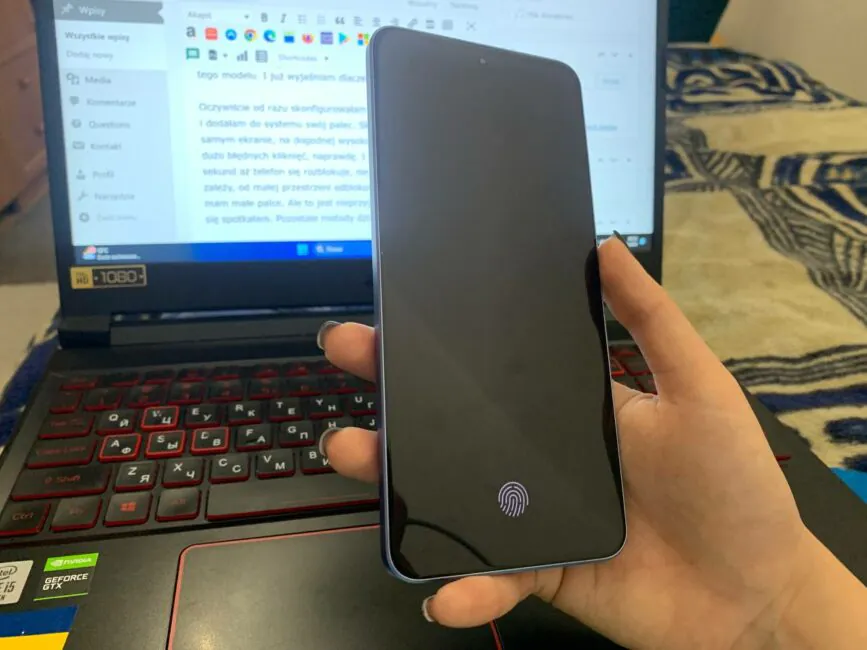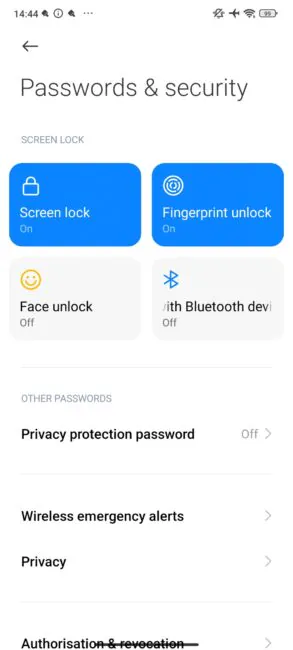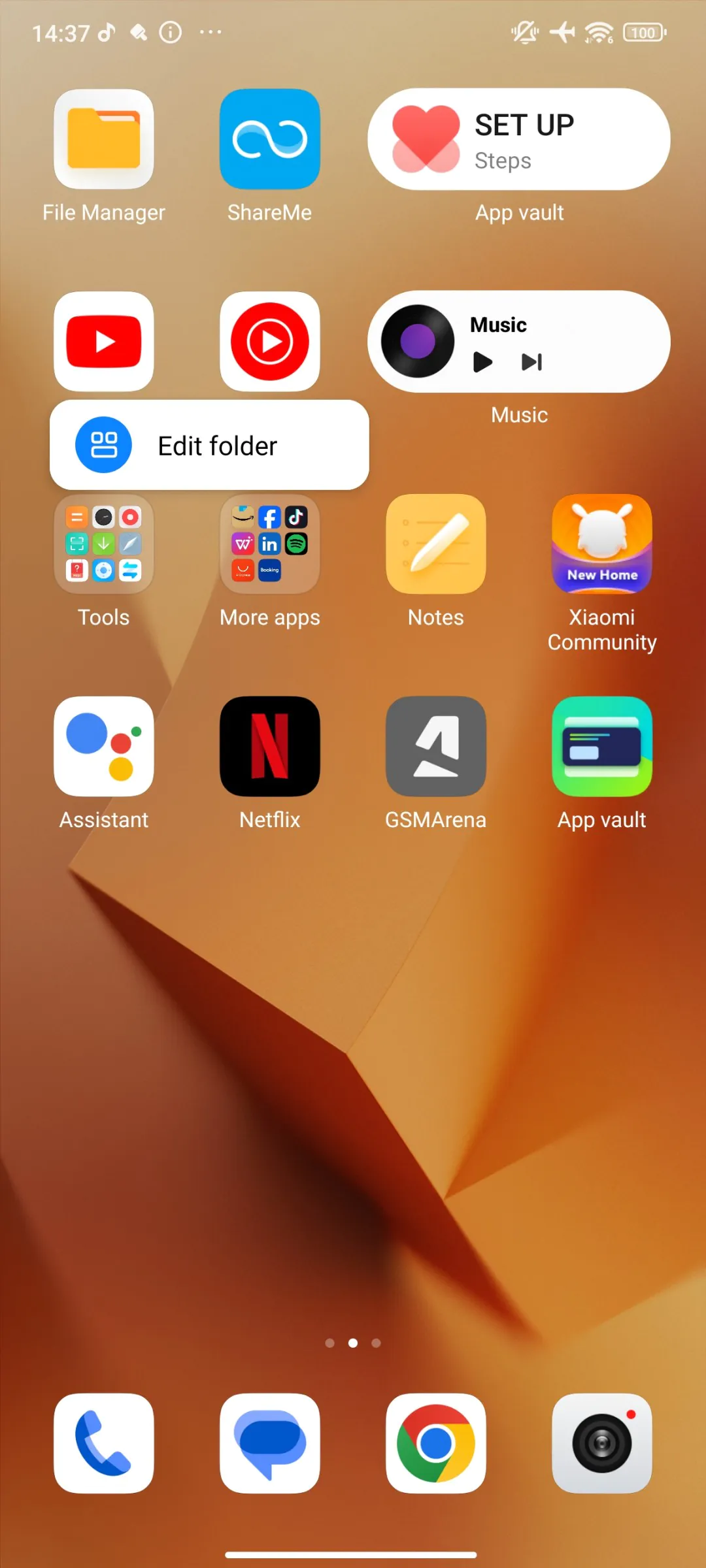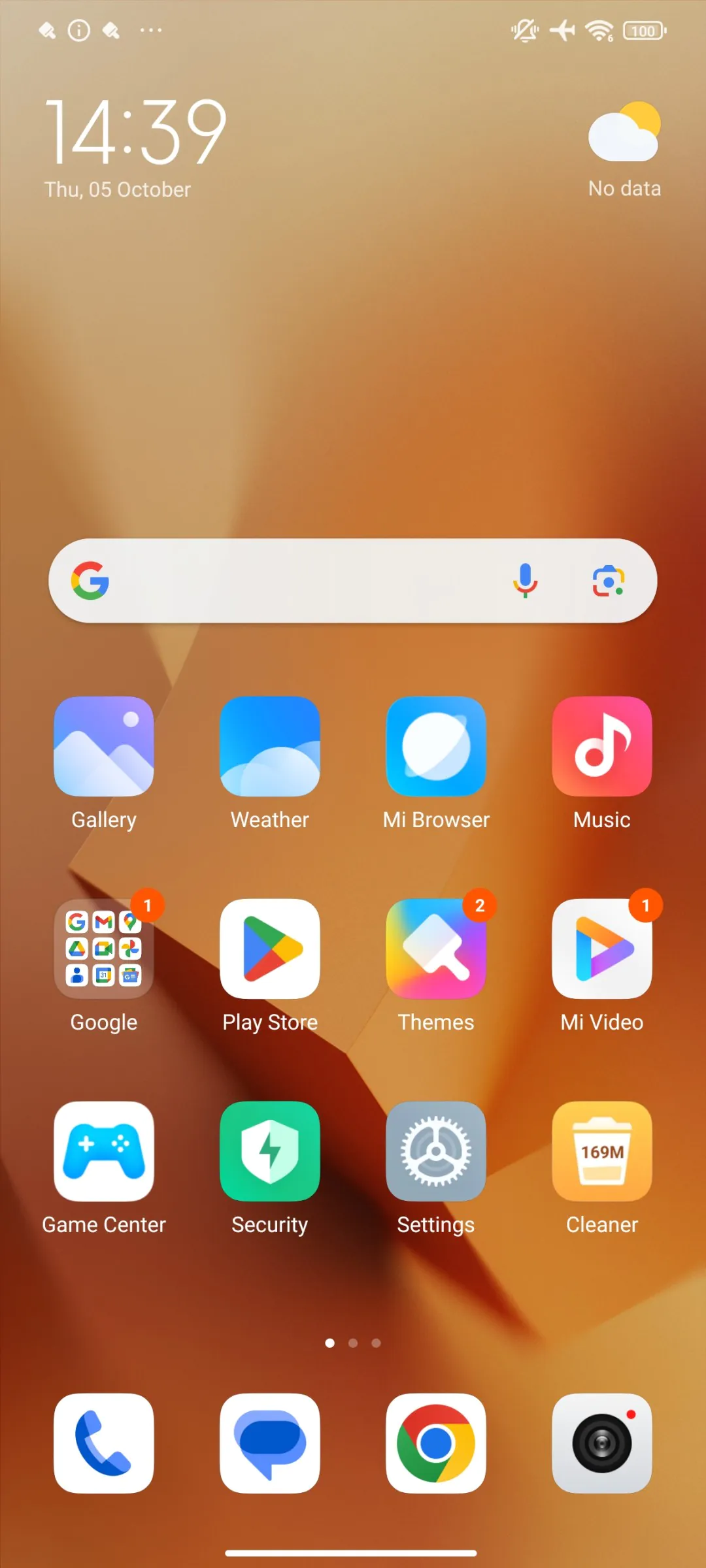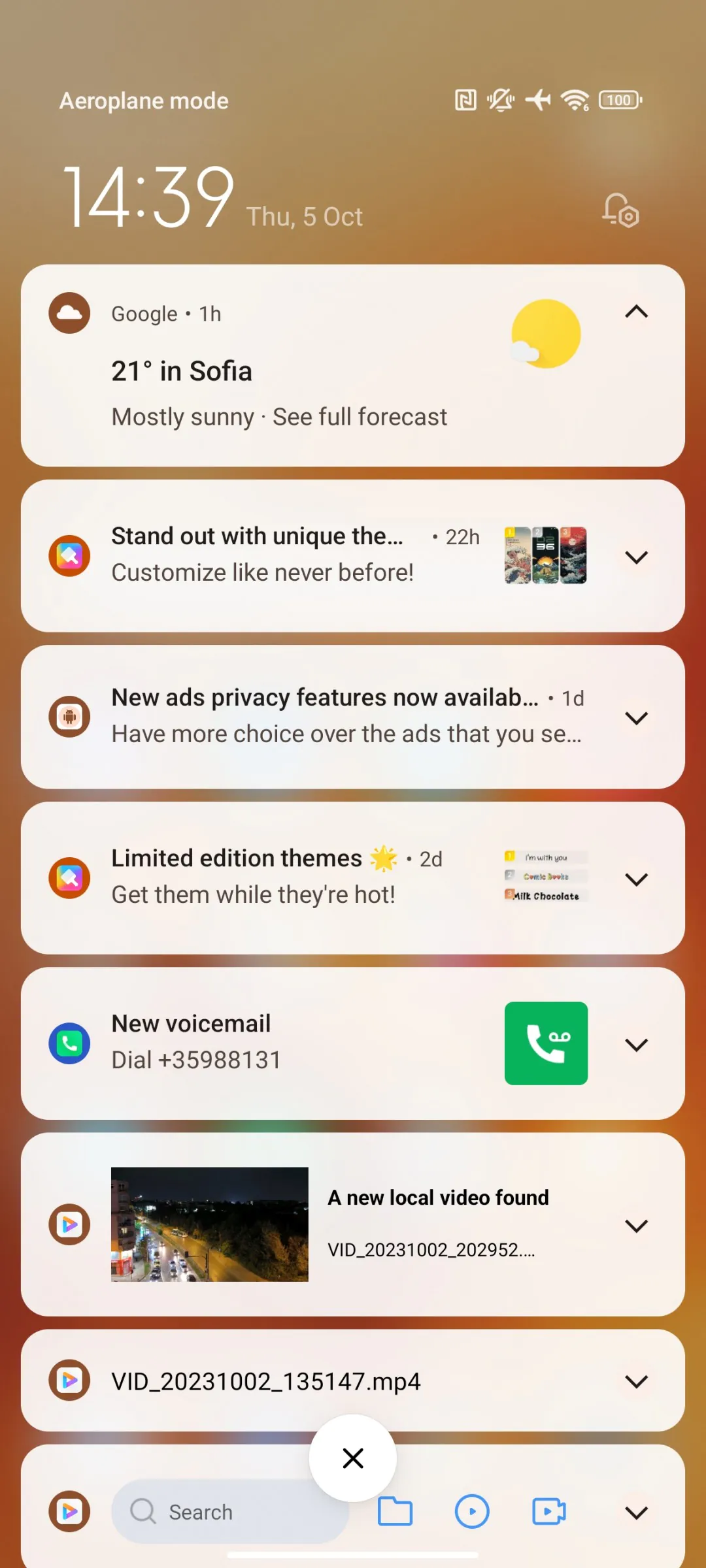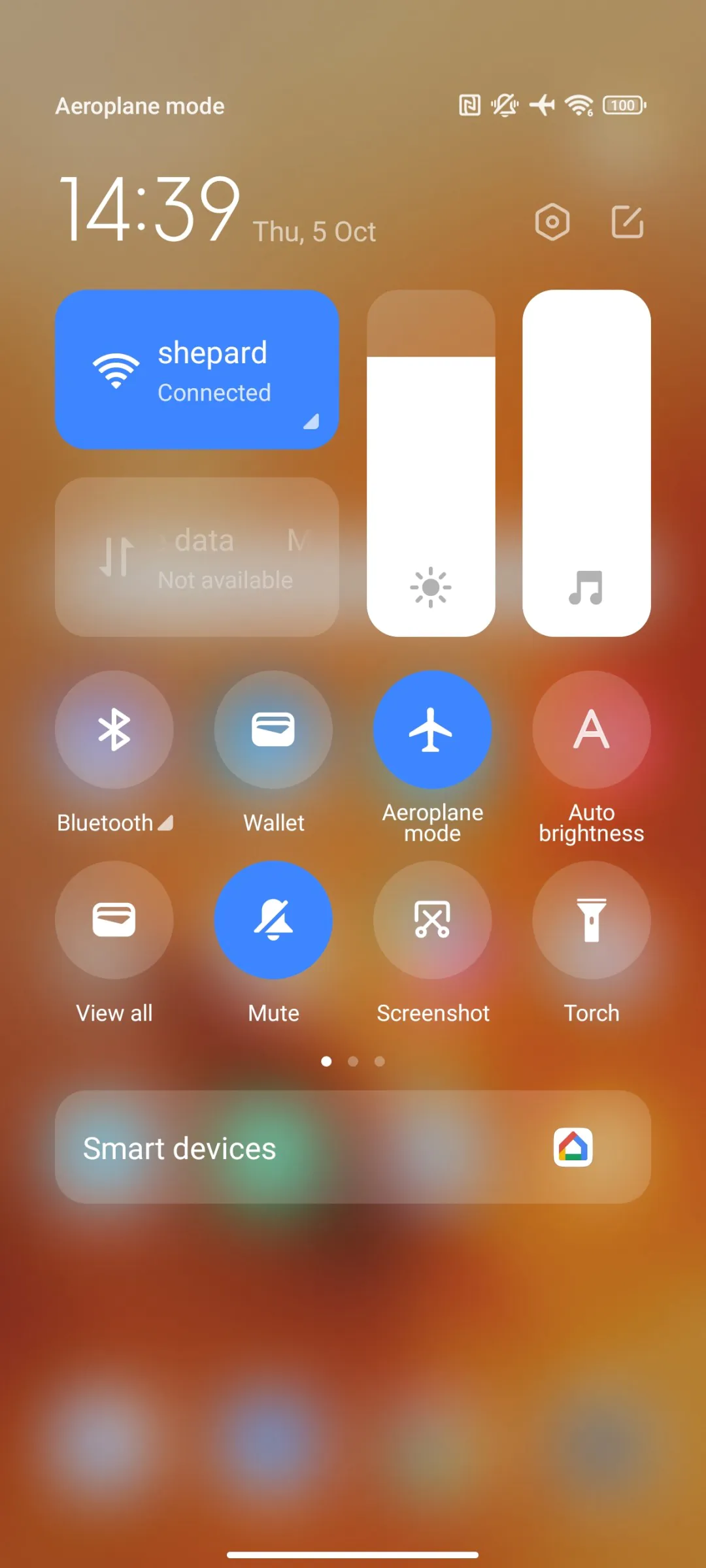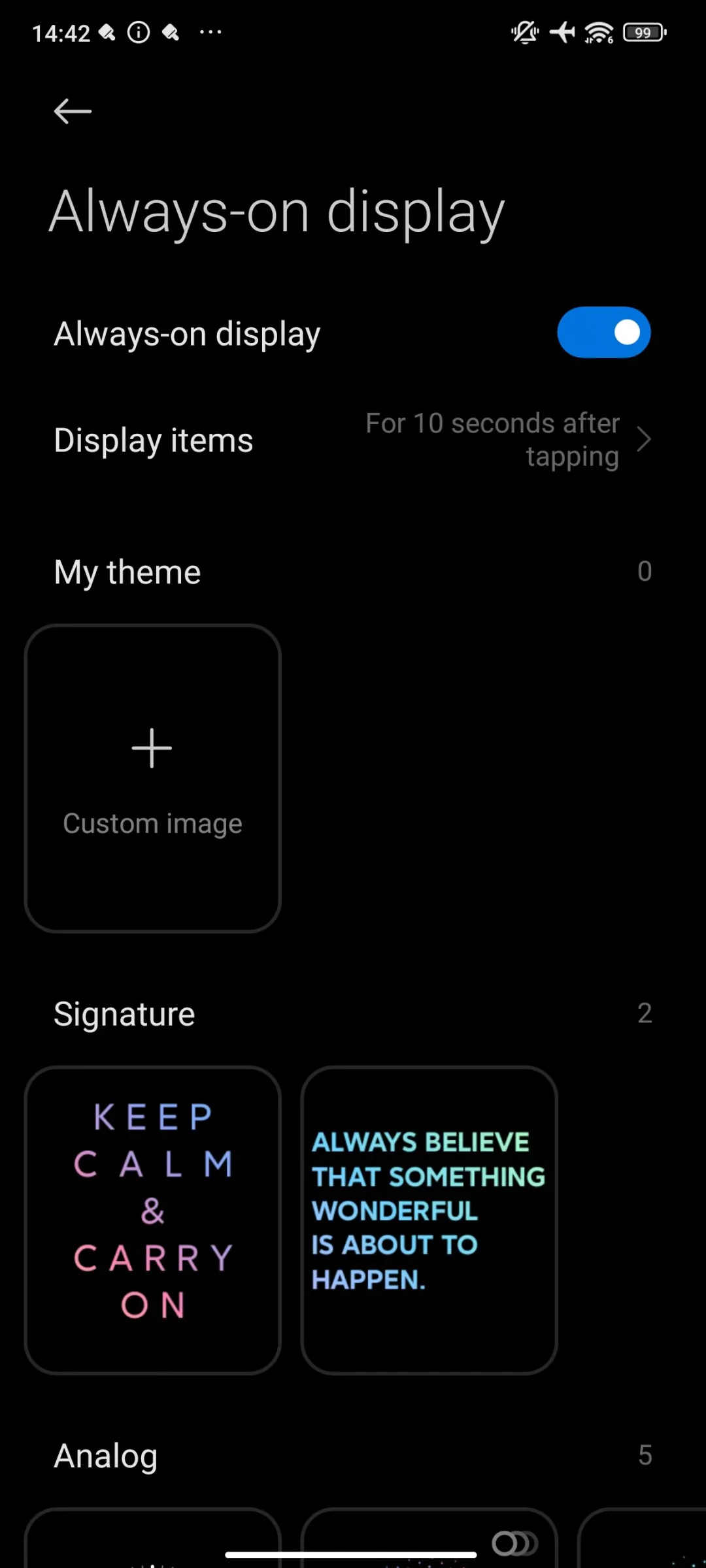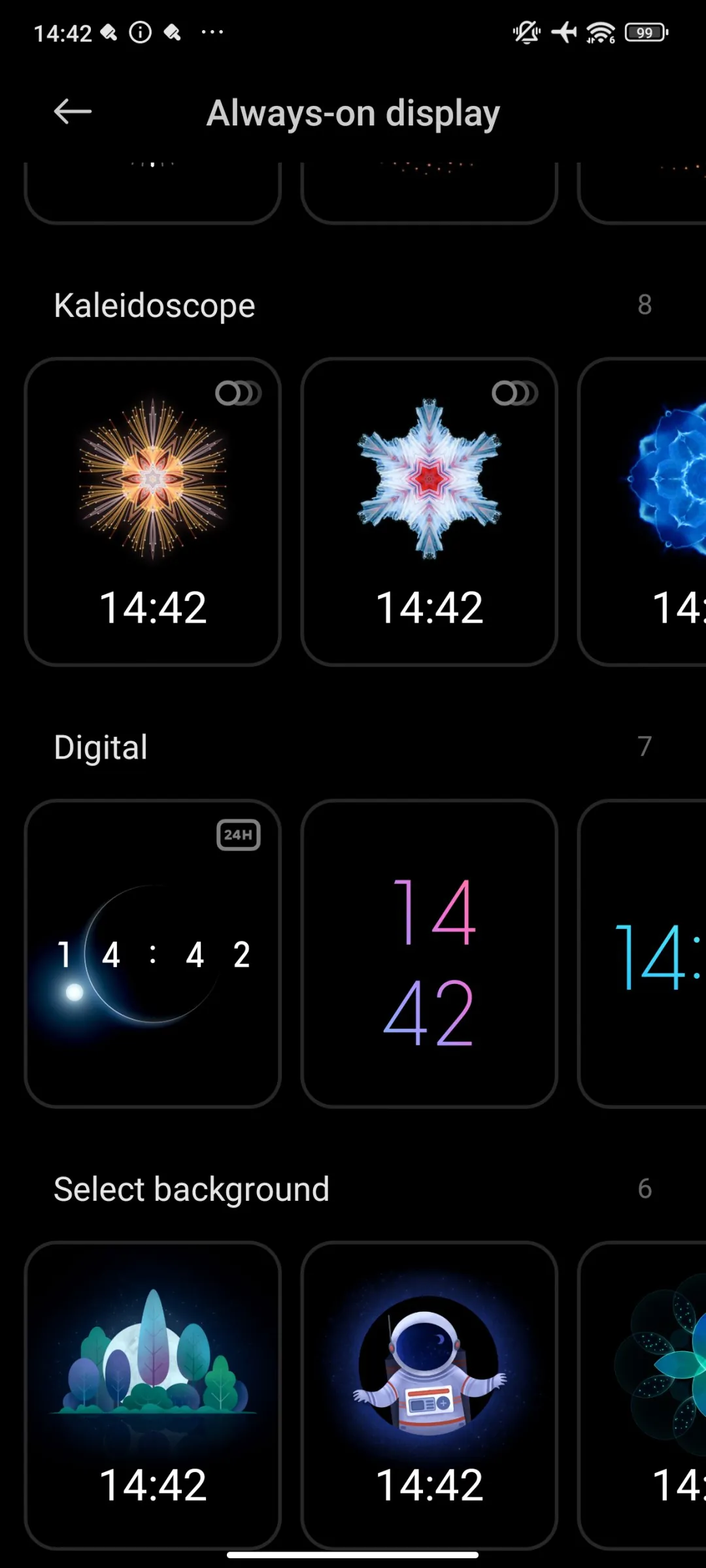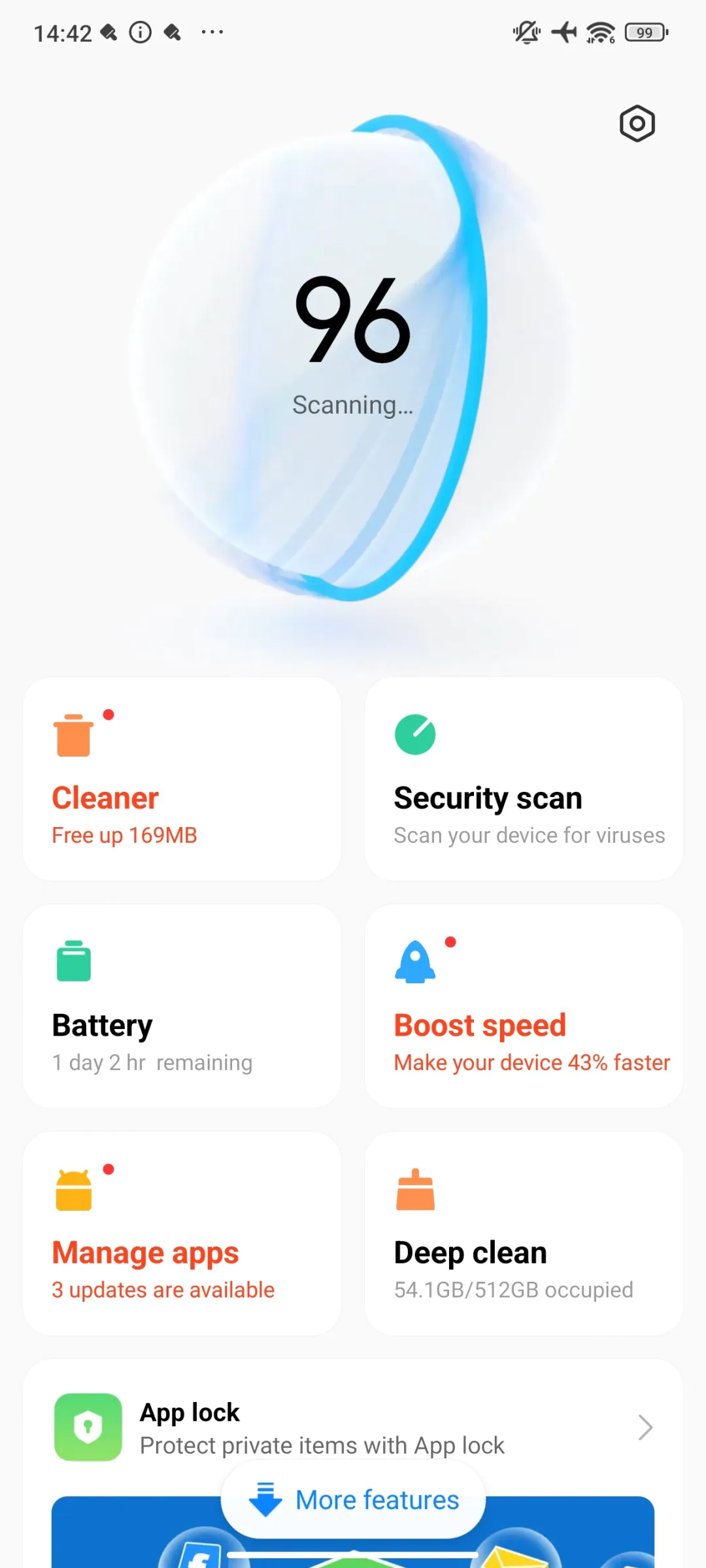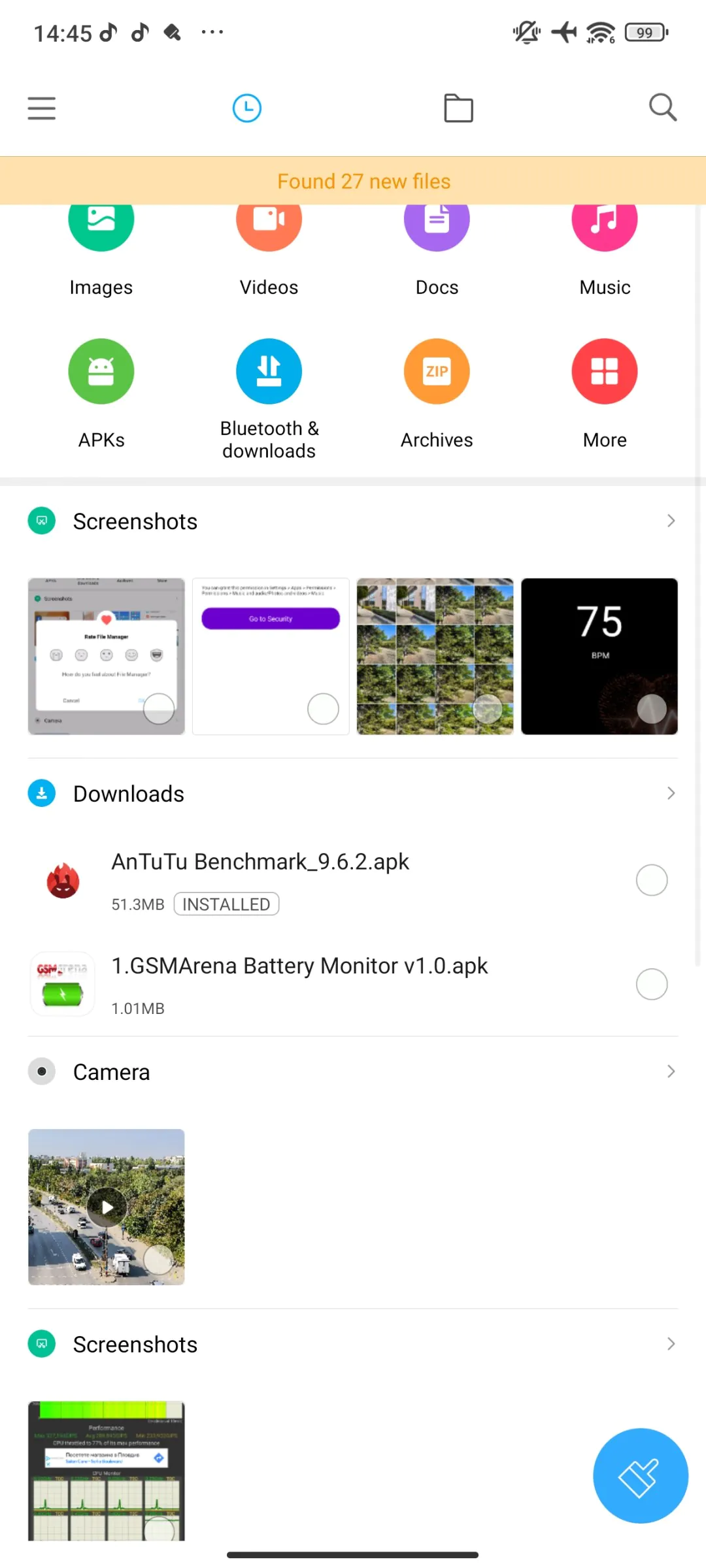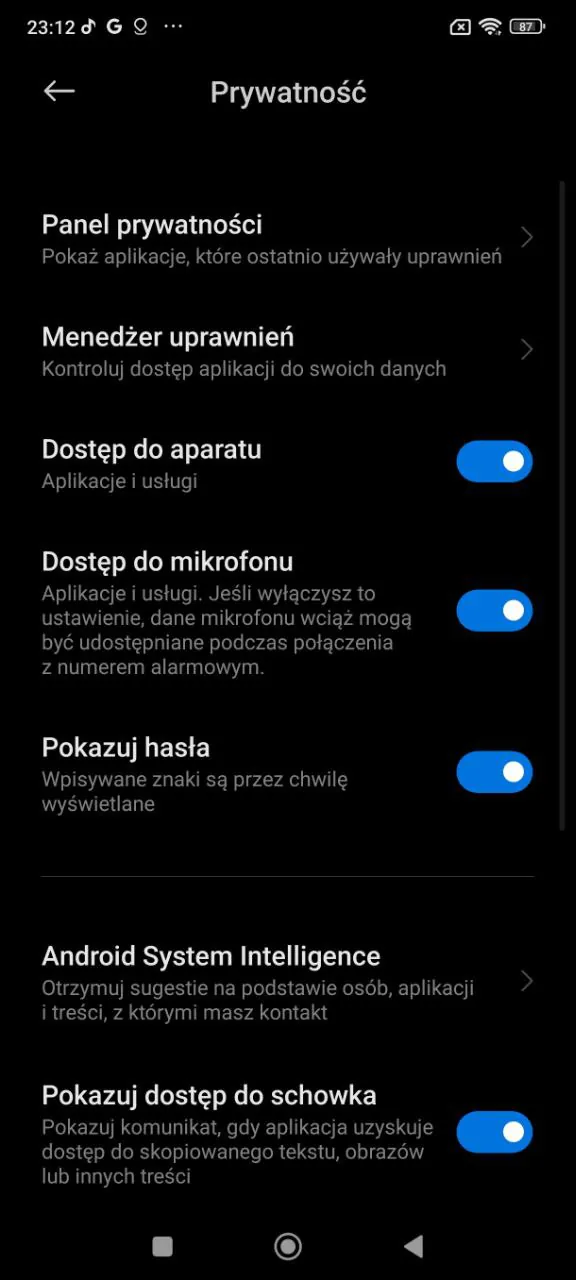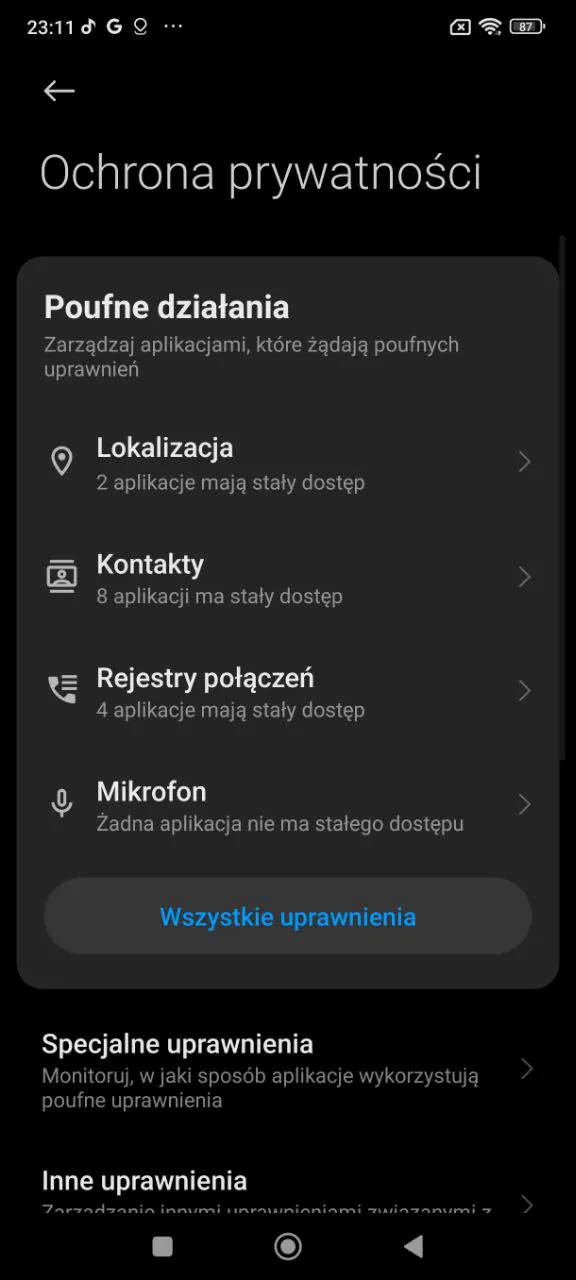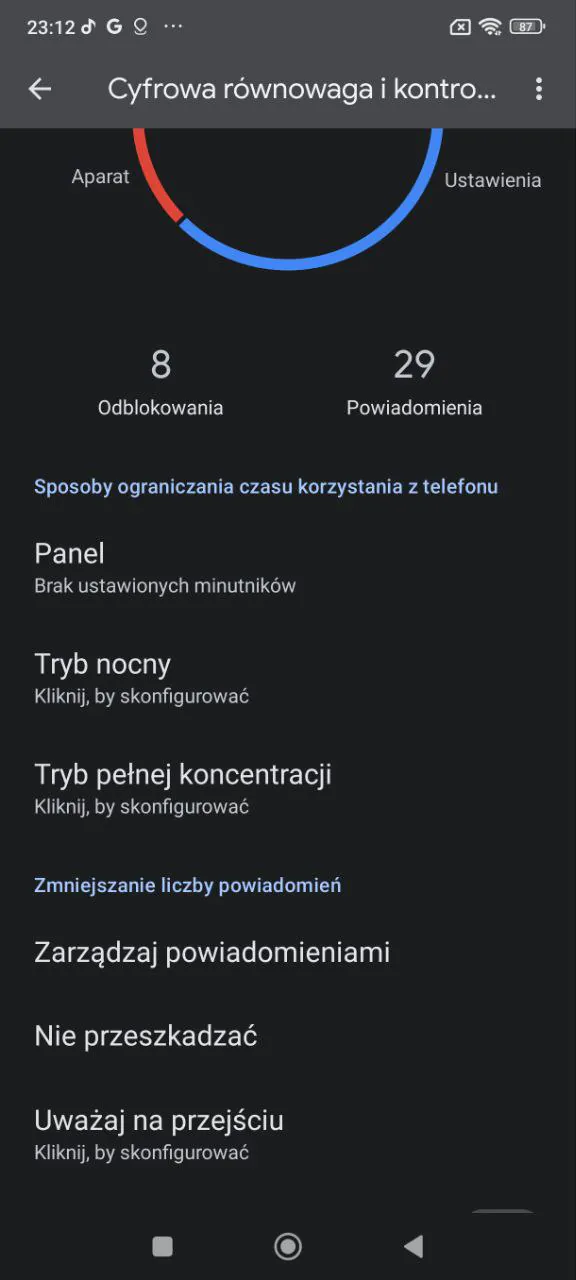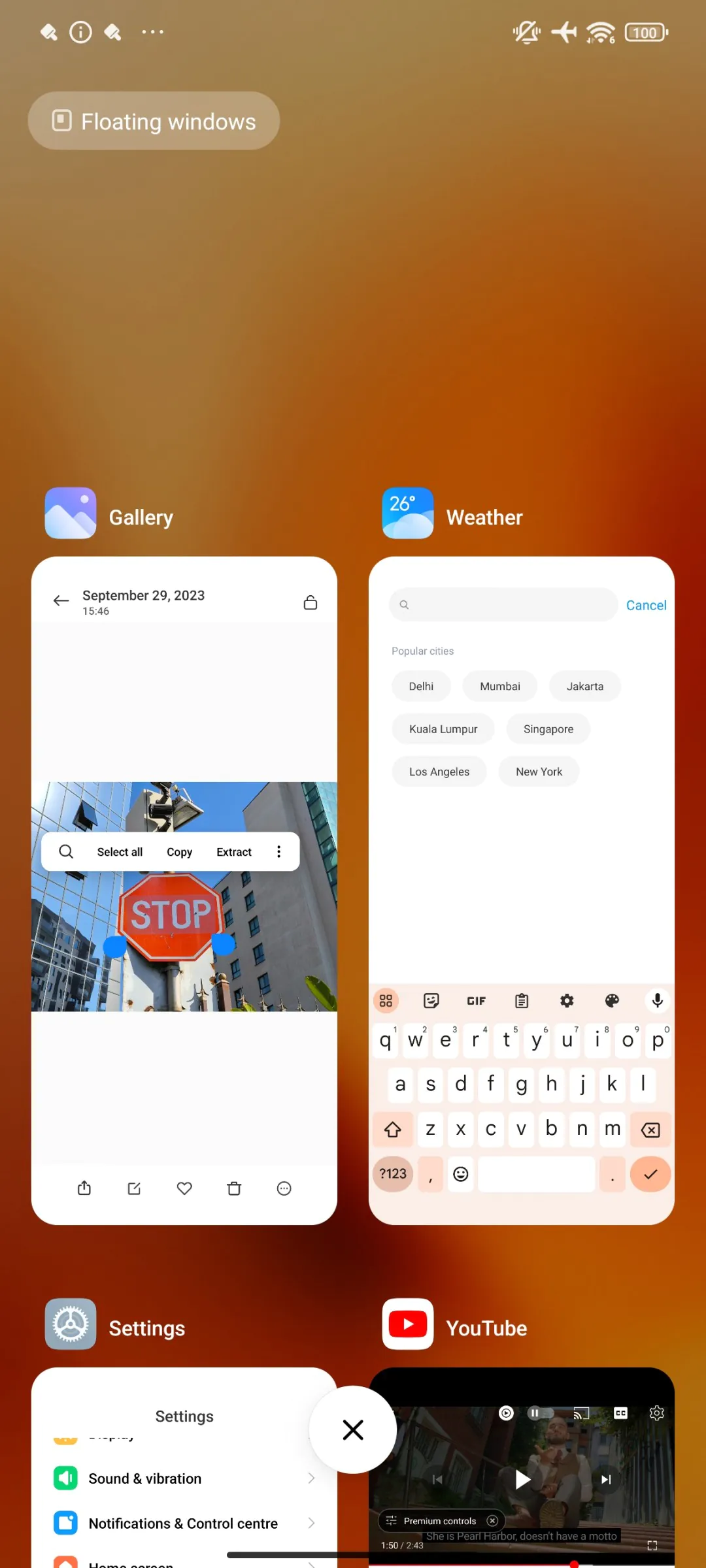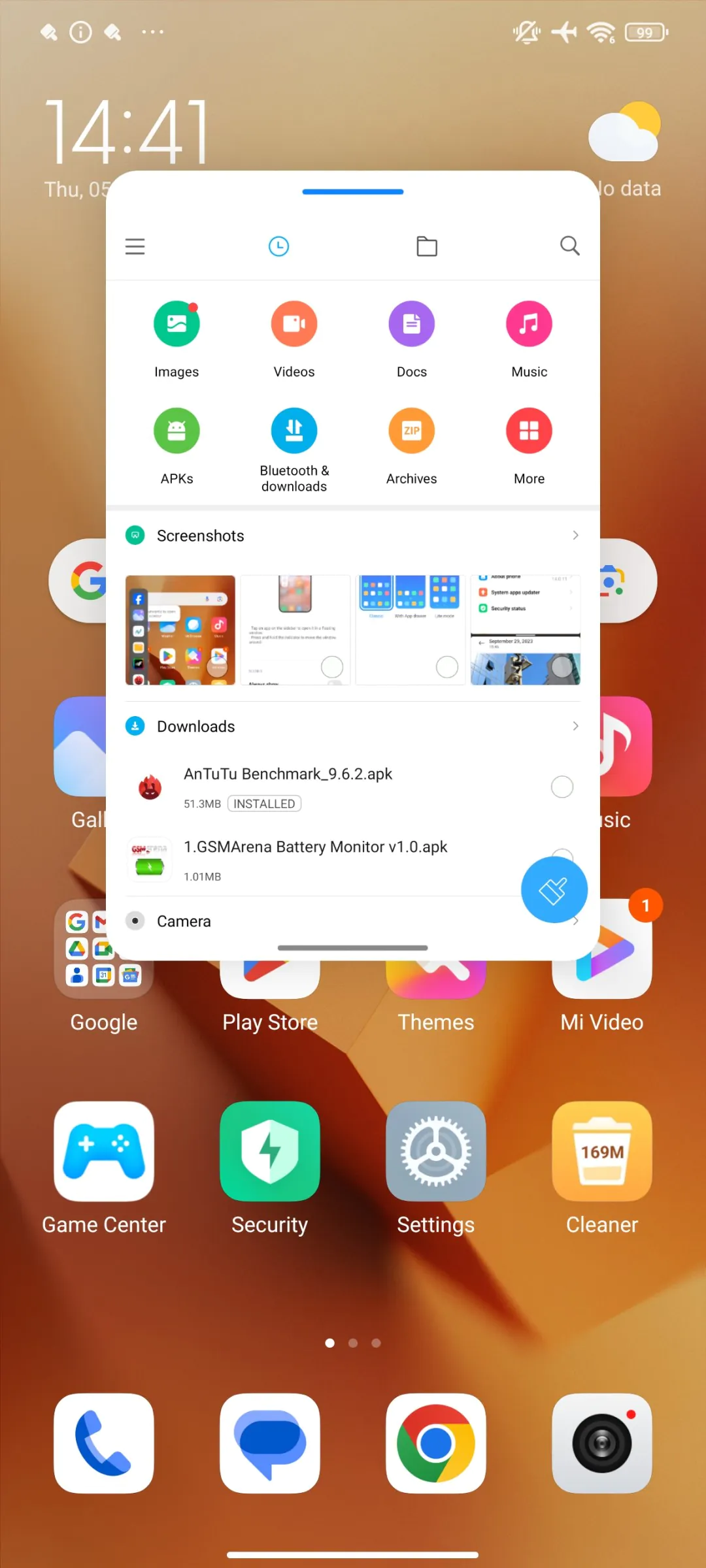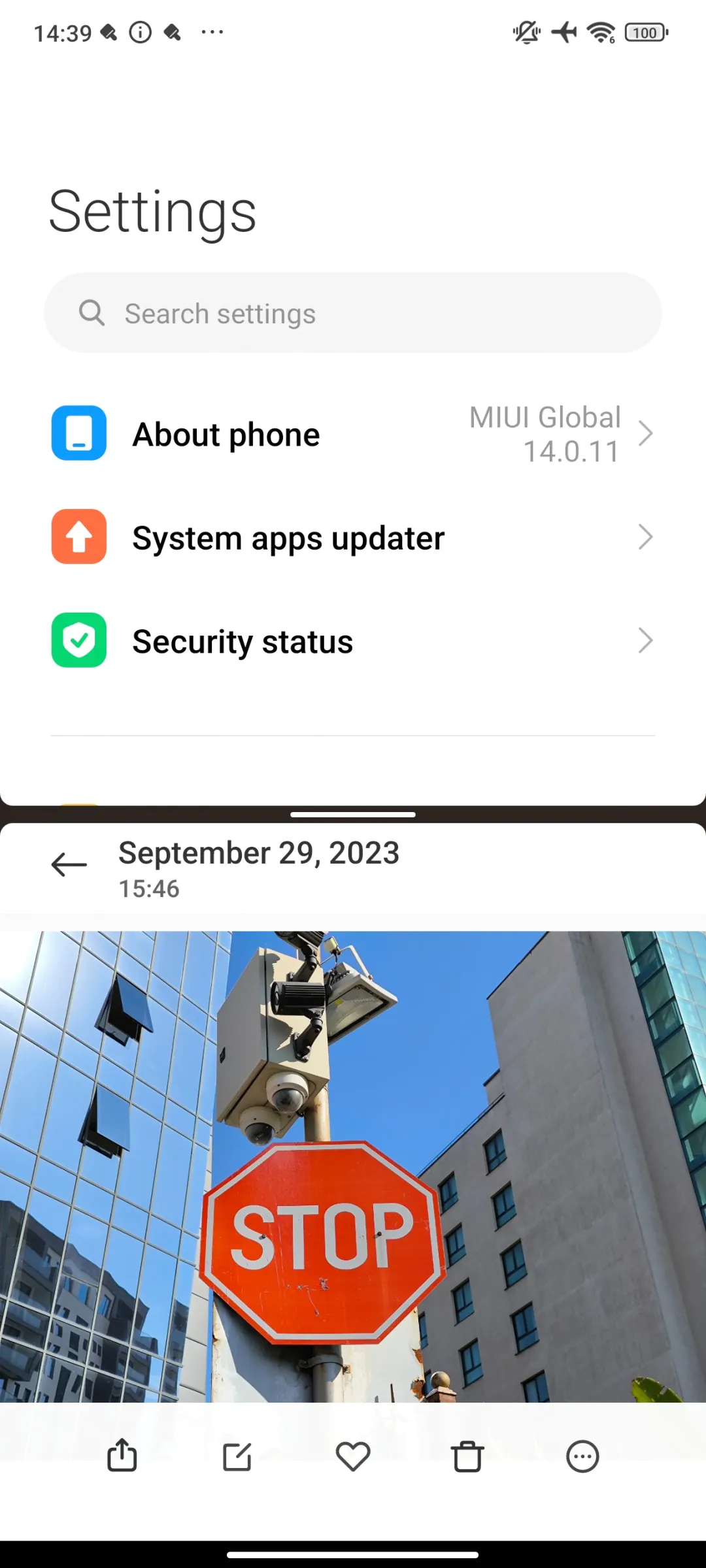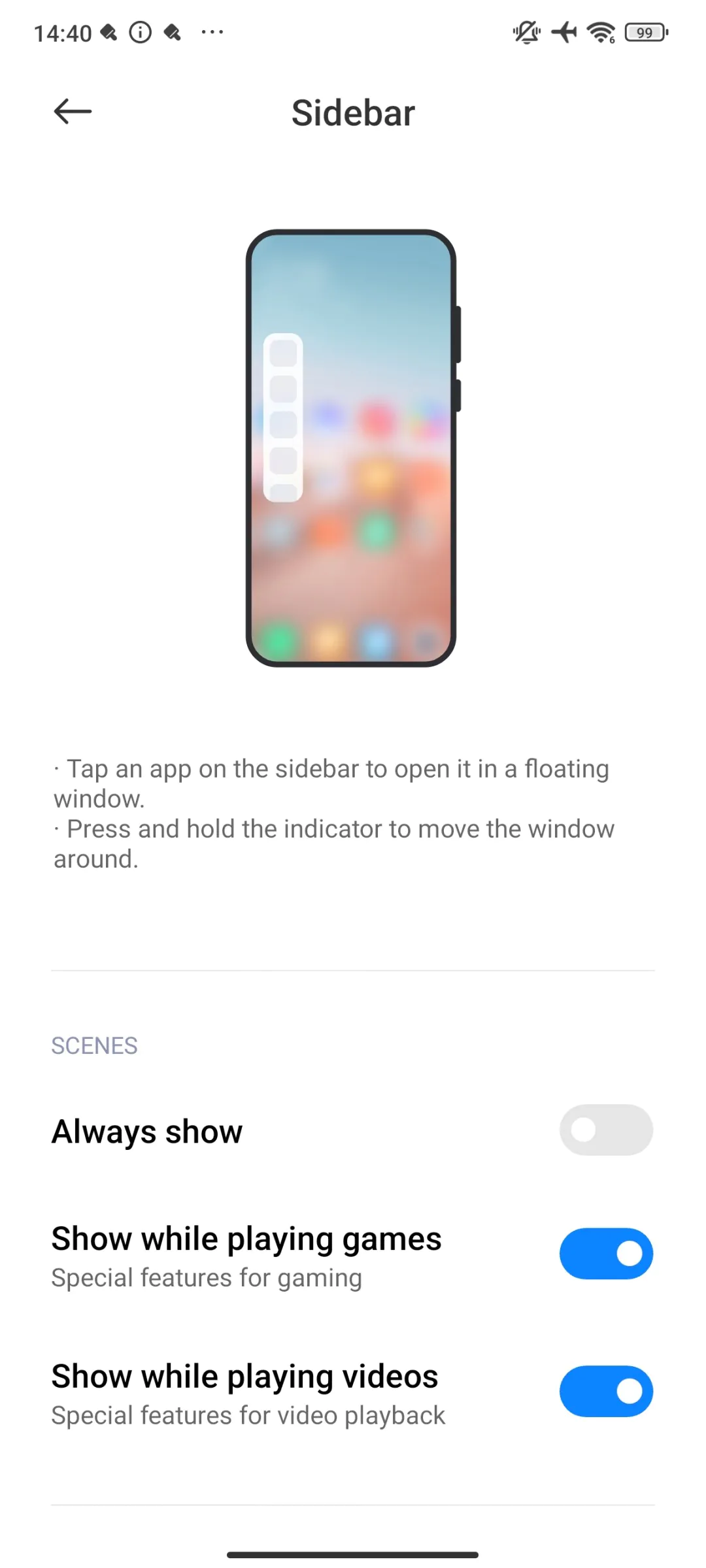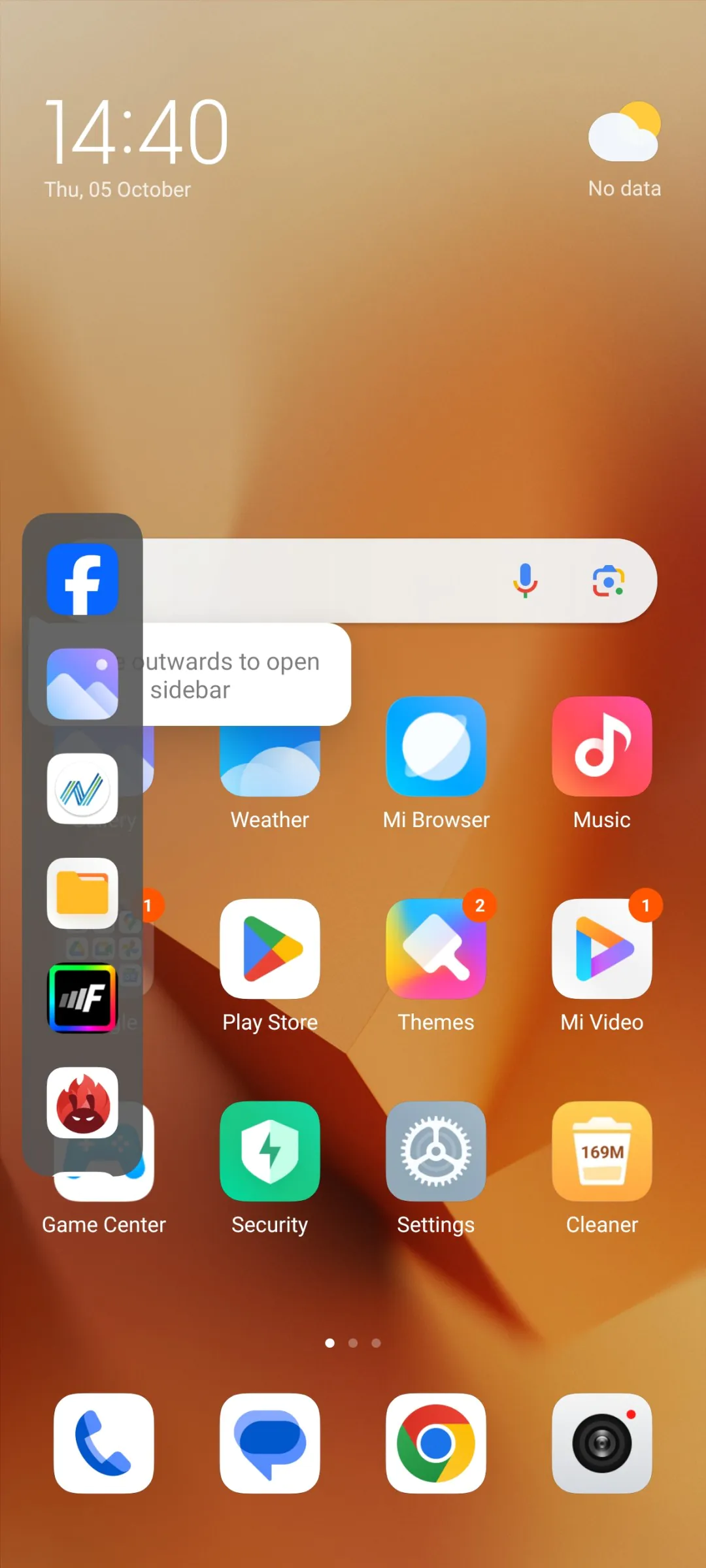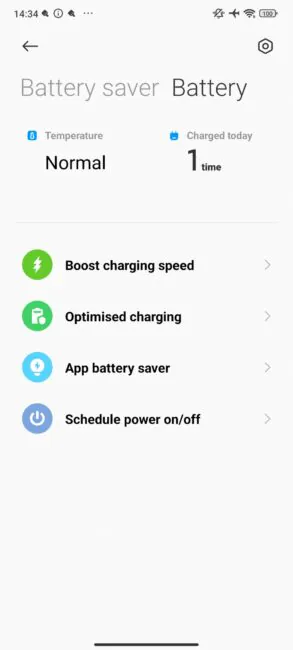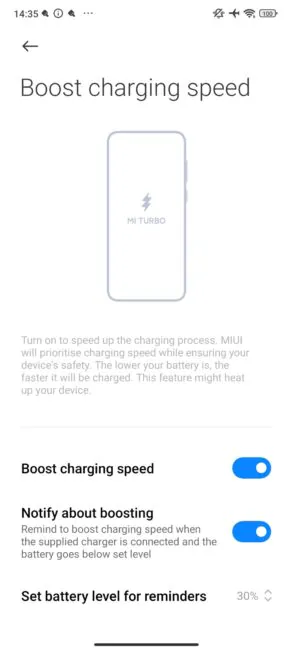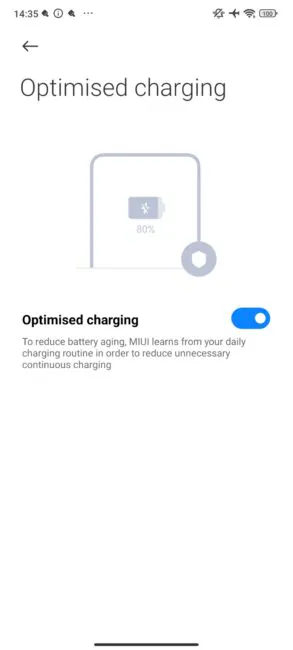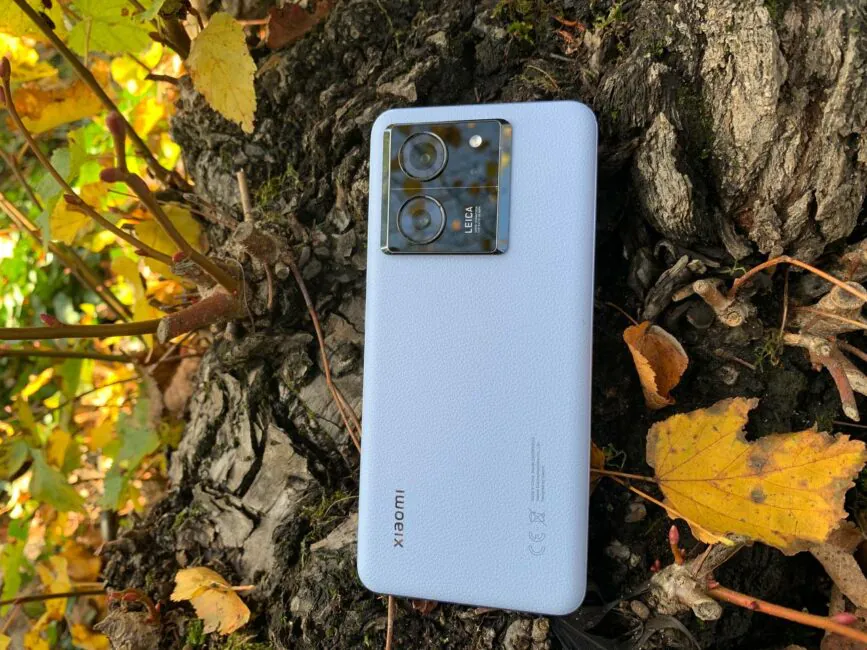© ROOT-NATION.com - Use of content is permitted with a backlink.
Xiaomi 13T Pro is a new representative of the brand. The promises are good, and it looks like we have a new candidate for flagships, or at least a “flagship killer.” Today, we’ll figure out whether it’s worth buying this model, taking into account all the pros and cons.

The model is sold on the market in several memory configurations, namely 12/256, 12/512, 16/512 GB, and 12 GB/1 TB. The smartphone is not the most affordable, costing from ∼25000 UAH depending on the configuration. Therefore, we will evaluate it in the “expensive devices” category.
Users can choose one of the body colors: blue, green, and classic black.
It is worth noting that the blue version has a fashionable eco-leather back panel. And we got it for a test!
Specifications of Xiaomi 13T Pro
- Processor: Mediatek Dimensity 9200+, 4 nm, octa-core (1×3.35 GHz Cortex-X3 and 3×3.0 GHz Cortex-A715 and 4×2.0 GHz Cortex-A510)
- RAM: 12/16 GB
- ROM: 256/512 GB, 1 TB
- Display: 6.67″, CrystalRes AMOLED, 144 Hz, 1220×2712 pixels, 12-bit color depth, Dolby Vision, HDR10+, average brightness 1200 nits, peak brightness 2600 nits, refresh rate 144 Hz
- Cameras: Leica optics
-
- Main module 50 megapixels, f/1.9, 24 mm equivalent, 1/1.28″, 1.22 μm, PDAF, OIS
- Telephoto lens 50 megapixels, f/1.9, 50 mm equivalent, 1/2.88″, 0.61 μm, PDAF, 2x optical zoom
- Ultra-wide-angle lens 12 megapixels, f/2.2, 15 mm equivalent, 1/3.06″, 1.12 μm
- Selfie lens 20 megapixels, f/2.2, 0.8 microns
- Video recording: 8K@24 fps, 4K@24/30/60 fps, 4K/1080p@30 fps HDR10+, 1080p@30/60/120/240 fps; 10-bit LOG, gyro-EIS
- Battery: 5000 mAh, 120 W HyperCharge
- Sound: stereo, Dolby Atmos, Hi-Res Audio
- Operating system: Android 13 with MIUI 14 shell
- Wireless technologies: Wi-Fi 802.11 a/b/g/n/ac/6e/7 tri-band, Bluetooth 5.4, GPS (A-GPS L1+L5, GLONASS G1, QZSS, NavIC L5, BDS, Galileo E1+E5a), NFC, infrared port, DualSIM (two Nano SIM or Nano Sim + eSIM)
- Sensors: 360° ambient light sensor, linear motor, color temperature sensor, sunlight mode, accelerometer, flicker sensor, infrared port, proximity sensor, in-screen fingerprint scanner, digital compass, gyroscope
- Dimensions and weight: 162.2 × 75.7 × 8.5 mm, 206 g
- Protection certificate: IP68, dustproof and waterproof (can withstand submersion to a depth of 1.5 m for 30 minutes)
- Colors: Alpine Blue, Meadow Green, Black
Package contents
The device came to me in a white cardboard box. Inside you’ll find the phone itself, a case to protect it from mechanical damage, a SIM eject tool, a charger, a USB Type-C cable, and a user manual – everything you need for comfortable use. Oh, yes – there’s also a screen protector.
I was extremely happy to see a 120W power supply! After all, chargers included with flagship models are very rare, and they are also so powerful. So we already have something to praise the manufacturer for.
Read also: Xiaomi 13 Pro review: a flagship with a clumsy design and a high price tag
Design and layout of elements
Xiaomi 13T Pro looks like its price – at first glance, you can see that it’s an expensive model. However, I have something to complain about. Let’s start with the appearance of the front panel – the screen bezels are noticeable and could be smaller in a device of this price category, and here we see the front camera, which is actually a small notch. The screen is protected by Gorilla Glass 5.
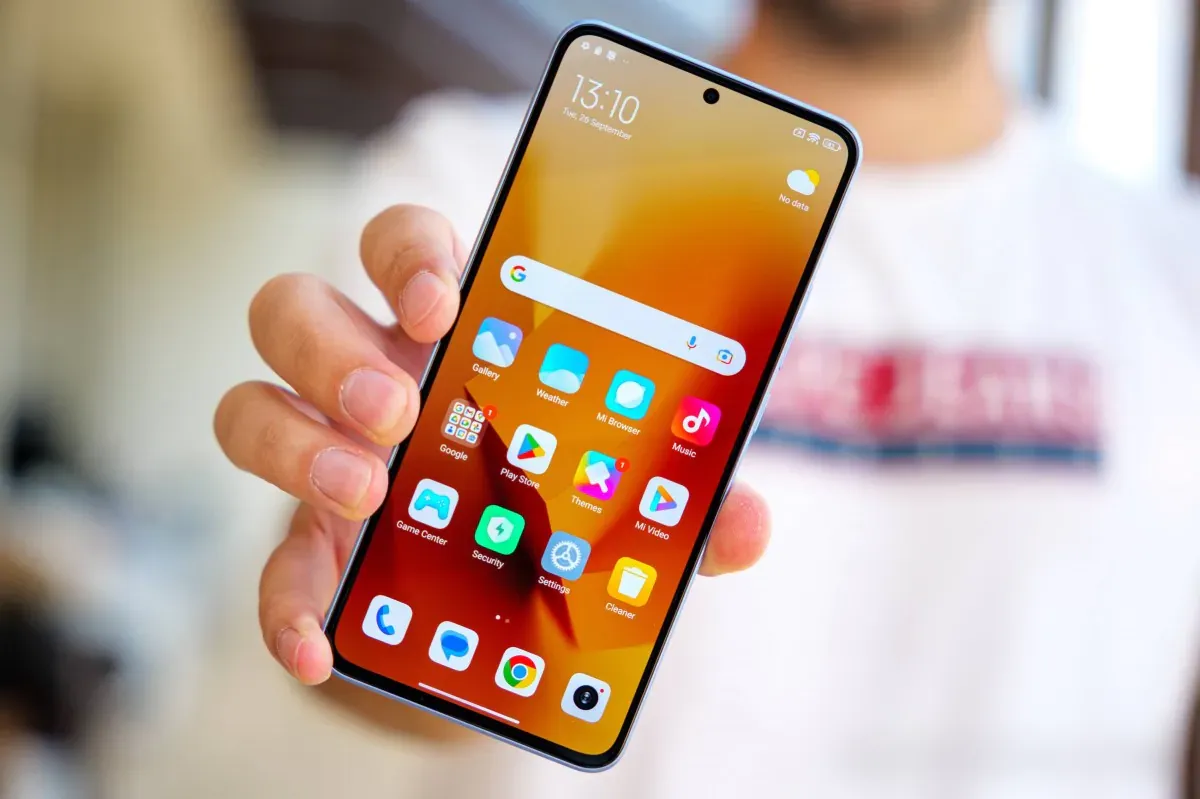
The unfortunate fact is that we have plastic all around the perimeter of the case – it imitates metal very well, but if you tap your fingernail, you will immediately recognize the characteristic sound of plastic – and this is an obvious oversimplification.
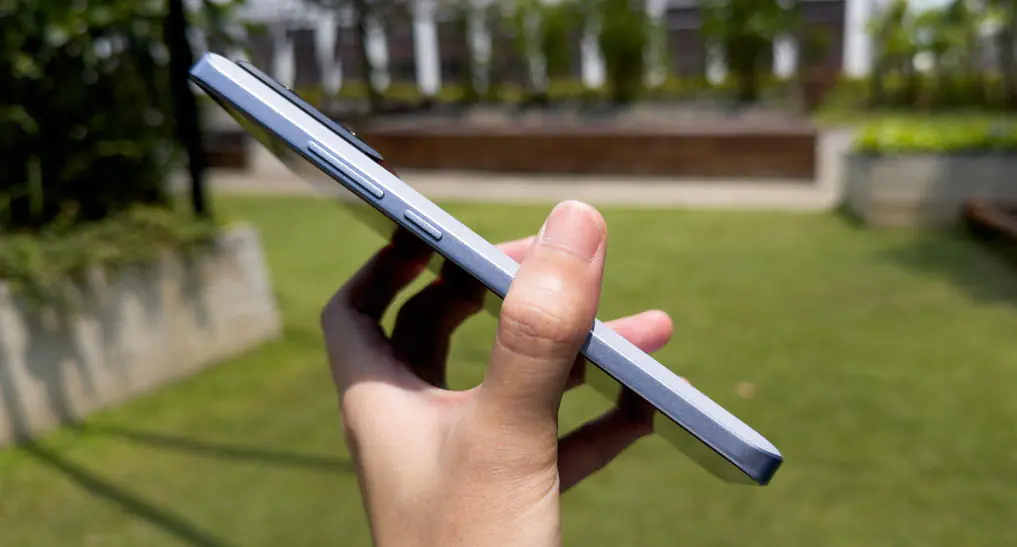 The left side is empty. The right side, on the other hand, contains function buttons – power and volume.
The left side is empty. The right side, on the other hand, contains function buttons – power and volume.
I’d like to point out an interesting design element: there is not only a “charger input” and speaker holes at the bottom, but also a SIM card tray on the left.
Now let’s focus on the appearance of the rear panel. What we see here is blue eco-leather! It looks beautiful and is very pleasant to the touch – believe me, it really is.
 I should add that the black and green versions of Xiaomi 13T Pro have glossy glass backs and look cool too – everyone will find their own version.
I should add that the black and green versions of Xiaomi 13T Pro have glossy glass backs and look cool too – everyone will find their own version.
As you can see, there is a glossy company logo on the left side of the back. The camera island takes up ⅓ of the entire panel. This protruding structure is too massive and stands out. As for me, it does not fit into the overall picture. However, perhaps not everyone has the same opinion.
Since the camera island protrudes above the body, you need to be careful when using the phone without a case.
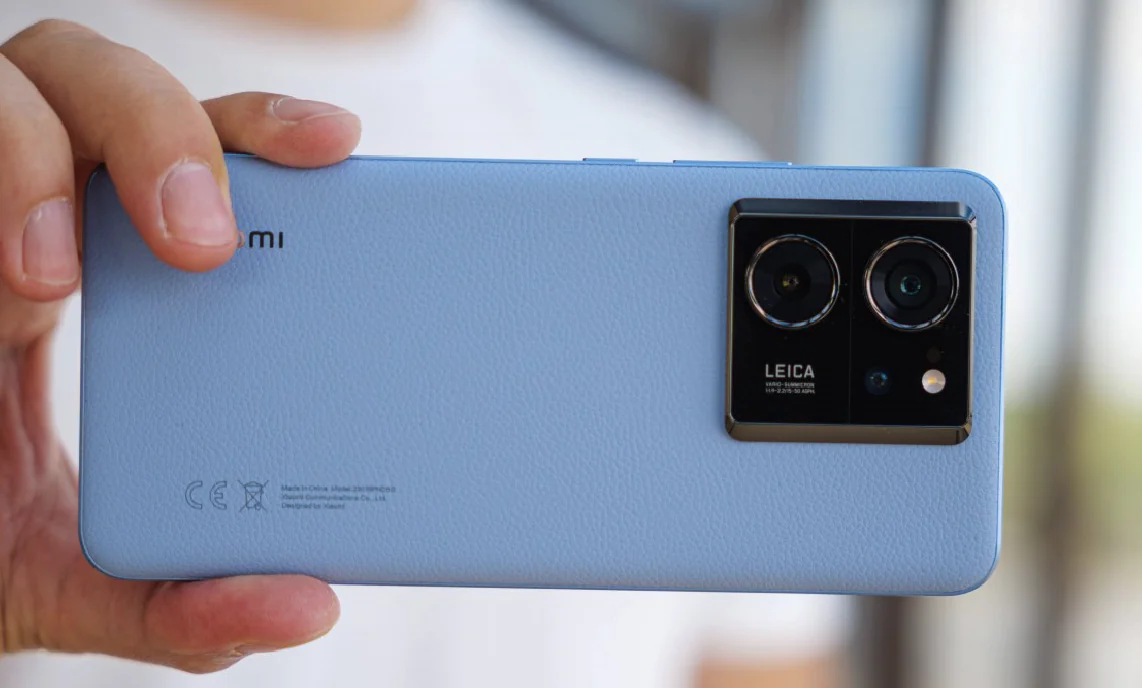 This island houses the camera modules – wide-angle, main, telephoto, and flashlight.
This island houses the camera modules – wide-angle, main, telephoto, and flashlight.
The Xiaomi 13T Pro body is decently made, the design is reliable. Here we also have the IP68 protection standard, which means that the phone is well protected from dust and water (it can “sink” at a depth of up to 1.5 meters for half an hour).
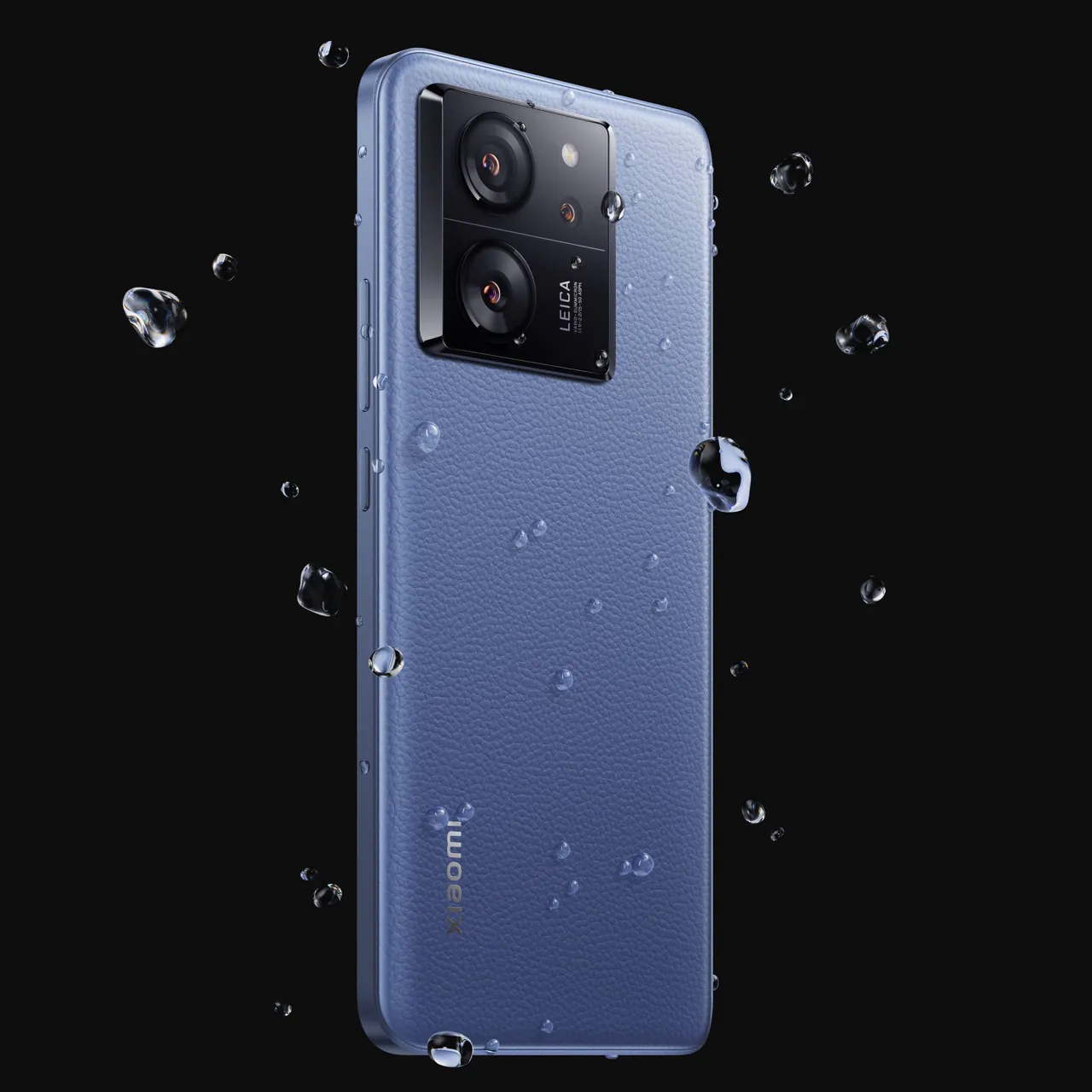
Ergonomics
The phone is thin and elegant. The presence of eco-leather deserves a separate paragraph, because thanks to this material, even when your hands are wet or sweaty, the phone will be safe. An additional advantage is the absence of any traces of use, which, again, was facilitated by eco-leather, which I will probably mention more than once in this review.
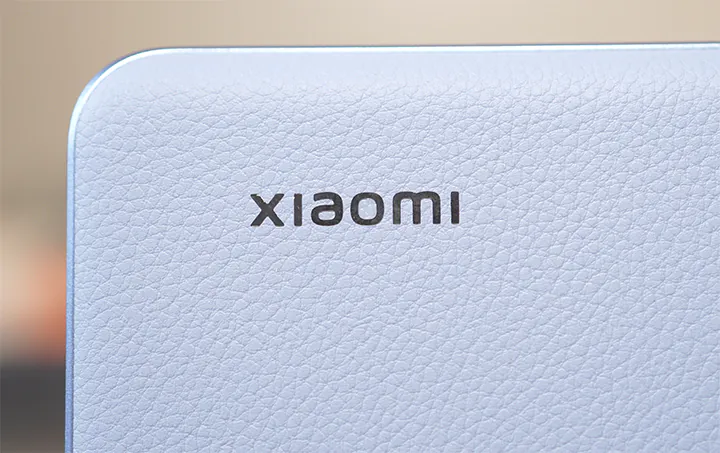 The smartphone has decent dimensions of 162.20×75.70×8.49 mm and is not too heavy – 206 g. After a whole day of using it in different positions, my wrist did not hurt. Why am I mentioning this at all? Because it’s very important for the elderly, children, and users who never part with their phones. And as we know, putting pressure on the wrist for a long period of time can cause all sorts of problems.
The smartphone has decent dimensions of 162.20×75.70×8.49 mm and is not too heavy – 206 g. After a whole day of using it in different positions, my wrist did not hurt. Why am I mentioning this at all? Because it’s very important for the elderly, children, and users who never part with their phones. And as we know, putting pressure on the wrist for a long period of time can cause all sorts of problems.
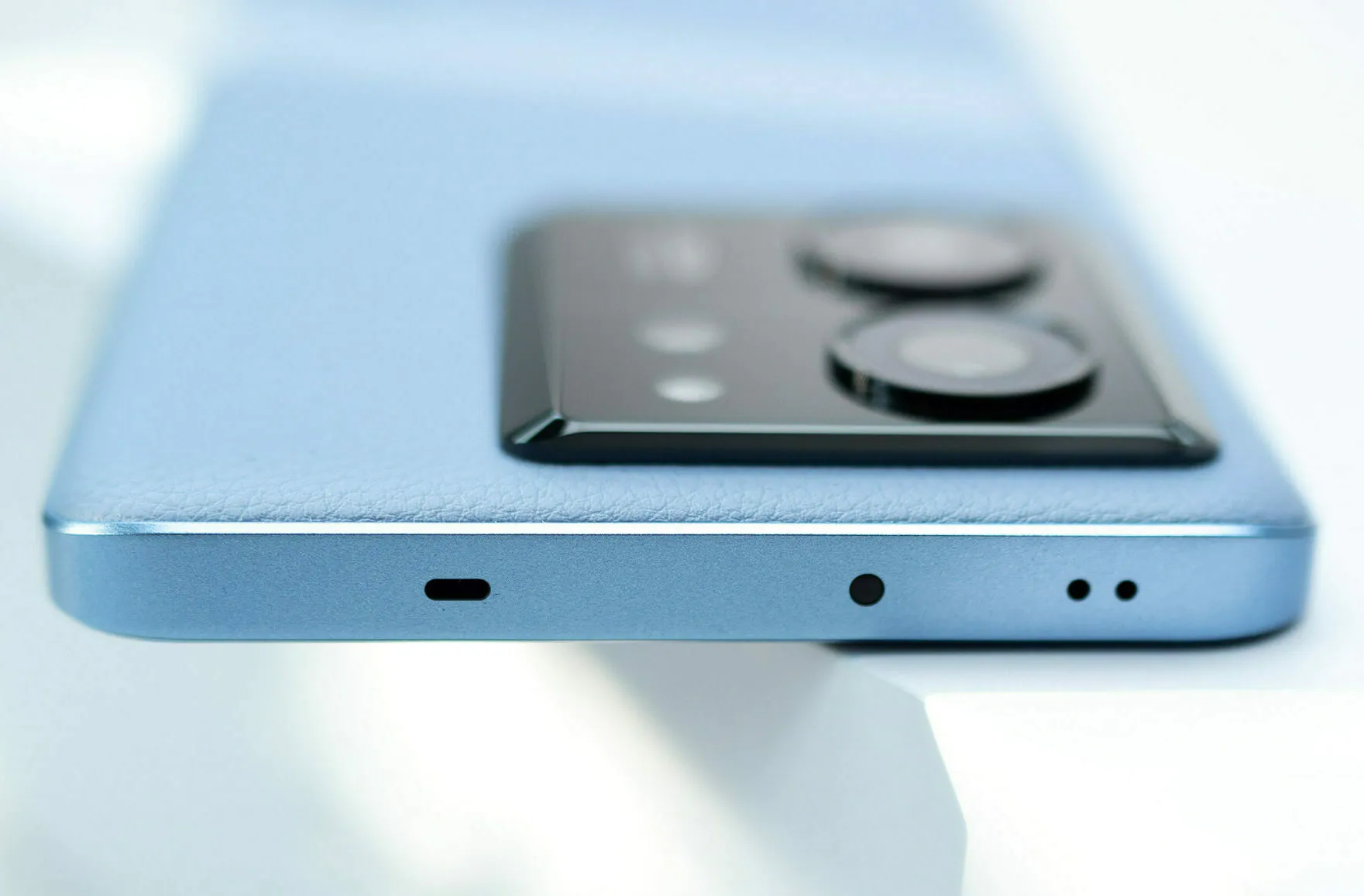
The side edges are rounded to increase comfort during use. However, one-handed operation is still not possible or not fully possible.
Read also: Xiaomi Smart Pet Fountain cat drinker review
Display
In this model, we see a 6.67-inch CrystalRes AMOLED matrix – this is definitely a plus, as the image is clear, rich, and high-contrast. The panel is really premium, here we have a dynamic refresh rate of 144 Hz, 12-bit color depth, 480 Hz touch sampling, 2880 Hz PWM dimming (to avoid flicker) and support for HDR10+ and Dolby Vision.
 In the settings, you can customize the screen to suit your needs/preferences: enable AoD, sleep mode, set up eye recognition, set up appropriate gestures to turn off the screen. And, of course, there are more obvious display settings: font brightness level, dark mode, color scheme, flicker reduction.
In the settings, you can customize the screen to suit your needs/preferences: enable AoD, sleep mode, set up eye recognition, set up appropriate gestures to turn off the screen. And, of course, there are more obvious display settings: font brightness level, dark mode, color scheme, flicker reduction.
Xiaomi 13T Pro supports the wide DCI-P3 color space. There are three color options available in the display settings – bright (default, DCI-P3), rich (DCI-P3 with enhancement) and original sRGB. For each mode, you can fine-tune the color temperature. There is also a special section where you can select a color gamut (original, P3, sRGB) and fine-tune colors, saturation, hues, contrast, and gamma.
The display supports refresh rates up to 144 Hz. There are two refresh modes – custom (selectable between 60 Hz and 144 Hz) and default (automatically switches between 30 Hz, 60 Hz, 90 Hz, 120 Hz and 144 Hz). The adaptive refresh rate works as expected – it drops to 60 Hz when static content is displayed on the screen and increases to the maximum in various games, benchmarks and compatible applications.

Speaking about my own experience, I would say that I was completely satisfied with the screen and its performance: the image is clear, the viewing angles are wide, and there is no loss of detail when changing position. Even on a sunny day, the screen remained readable, and I didn’t miss anything. According to the official specifications, the screen has 1200 nits of maximum brightness (this is the “Sunlight” mode) and up to 2600 nits of peak brightness – a record!
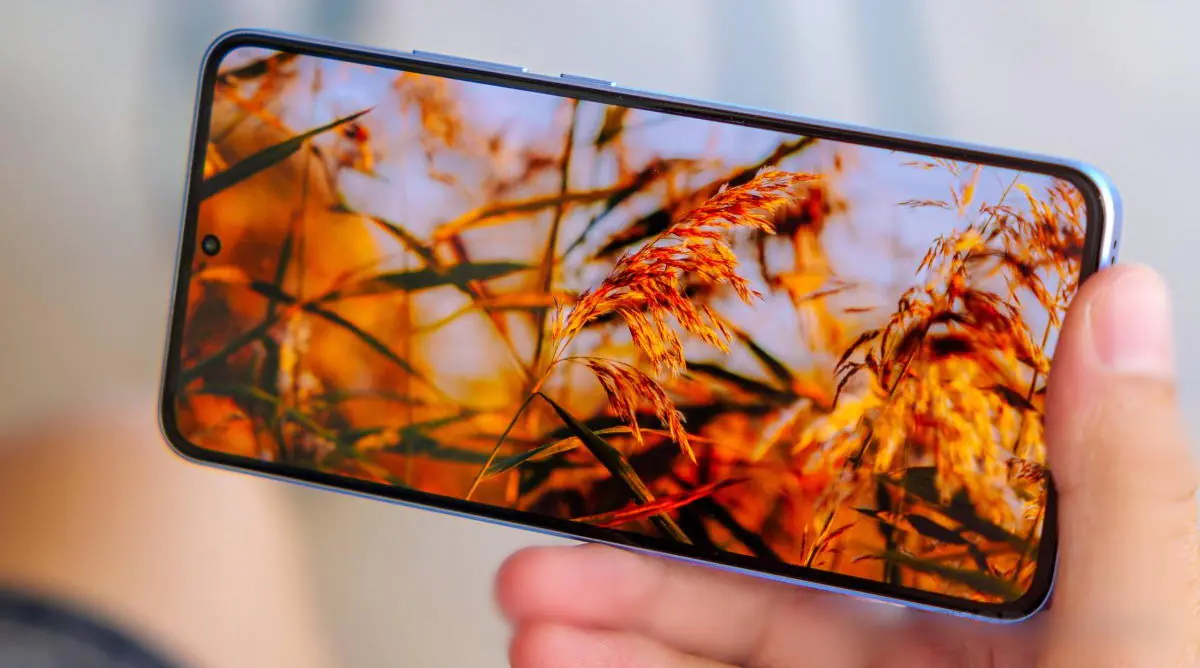
Read also: Xiaomi Smart Pet Feeder review
Performance
Xiaomi13T Pro is powered by an octa-core Mediatek Dimensity 9200+ processor with an Immortalis-G715 MC11 graphics card, the chipset is manufactured using a 4 nm process. The smartphone has 12 GB of RAM and 512 GB of storage – the latest versions of LPDDR5 and UFS 4.0. In the settings, you can add up to 8 GB of virtual RAM, but even without it, the system flies.
Yes, it’s not a Snapdragon, but don’t worry – the current processor is not bad. In terms of benchmarks:
- Geekbench 5: 4 888
- GFXBench (onscreen): 70
- GFXBench (offscreen): 61
- 3DMark (offscreen 1440p): 11 441
- AnTuTu: 1 214 088
- JetStream 2.0: 104.87
- PCMark Work 3.0: 14 172
- PCMark Storage 2.0: 46 761
However, I would like to say a little more about the actual performance, not just the dry numbers. There is almost no throttling, the phone does not slow down. However, during long and intense work, I felt the phone heat up, but this is not critical, because we are dealing with a slightly worse processor than Snapdragon. Applications switch quickly, even when running in the background. So this is a smartphone for any task.
Read also: Xiaomi 13 Lite review: diminutive might
Xiaomi 13T Pro cameras
The Chinese manufacturer has certainly improved its approach to camera design, and the partnership with Leica has provided Xiaomi’s top cameras with excellent photo and video quality. In addition, the presence of Leica’s proprietary modes (Vibrant and Authentic) allows you to get the best of both worlds – powerful post-processing like Samsung and Apple’s realistic approach.
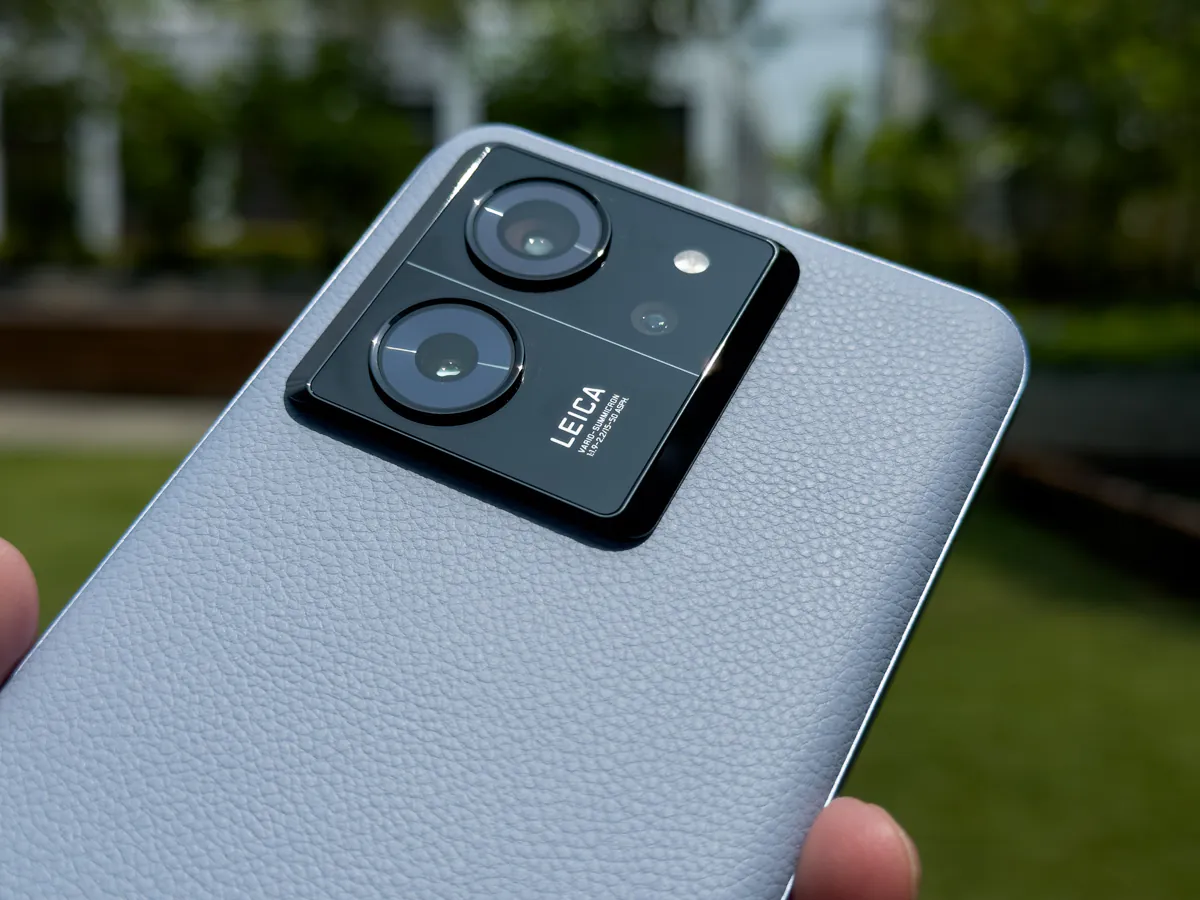
The photographic capabilities of this gadget are as follows:
- Main module – 50 megapixels, f/1.9, 1/1.28″, 1.22 μm, PDAF, OIS (Sony IMX 707)
- Telephoto lens – 50 megapixels, f/1.9, 1/2.88″, 0.61 μm, PDAF, 2x optical zoom (OmniVision OV50D)
- Ultra-wide-angle lens – 12 megapixels, f/2.2, 1/3.06″, 1.12 μm (OmniVision OV13B)
- Front-facing camera – 20 megapixels, f/2.2, 0.8 μm, fixed focus (Sony IMX596)
The only difference from the regular 13T is the ability to record 8K video on the main camera.
We’ll talk about each module separately, because there’s a lot to talk about. Let’s start with the main one. The 50-megapixel sensor takes pictures of very good quality.
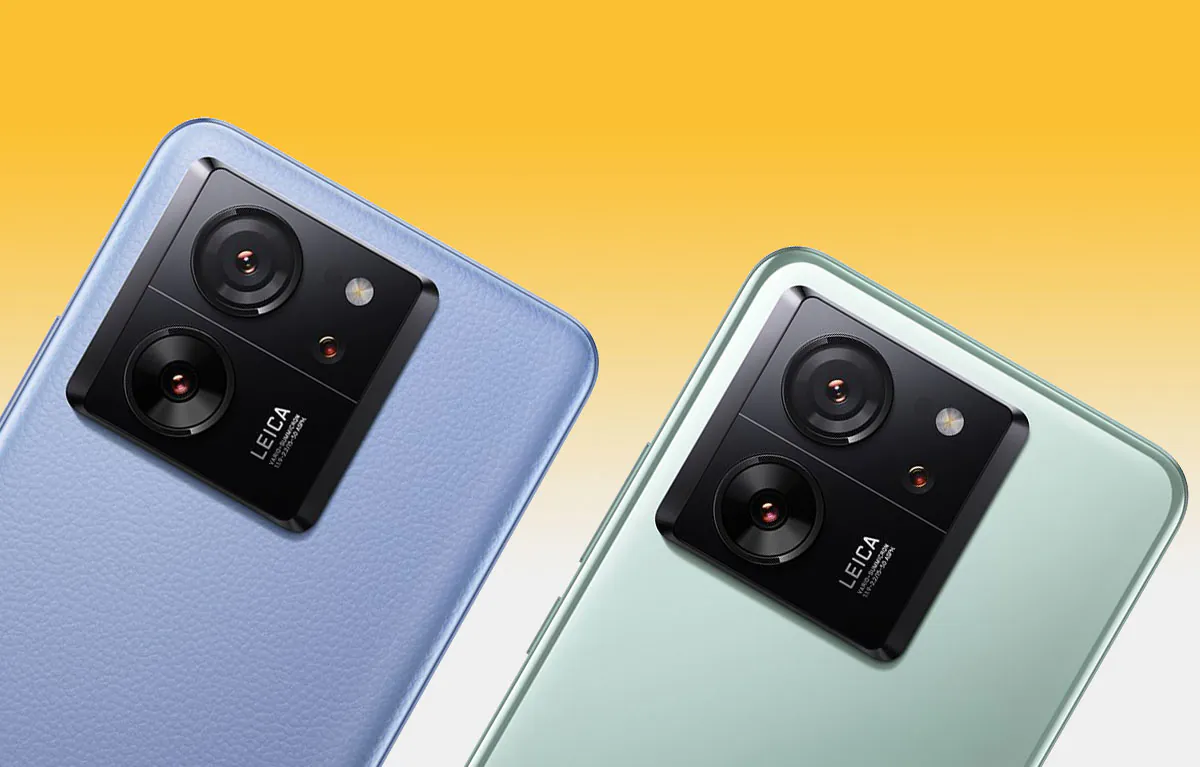
Leica modes, camera app
A small detail that can make a big difference in your photos is the two shooting modes – Leica Authentic and Leica Vibrant.
These two options differ in color reproduction: Authentic, as the name suggests, keeps the colors in the frame closer to reality and generally looks good. Vibrant, on the other hand, adds brighter tones to those colors and the footage is more vibrant and interesting, so I tend to use Vibrant. Below I publish these options for comparison. On the right is Vibrant, on the left is Authentic.
You need to select a processing mode when you first start the camera, but after that you can switch between them as much as you like. You need to be in one mode or another – there is no “universal” auto mode, except for Leica. In addition, there is an AI switch that usually increases contrast and saturation depending on the scene.
I also liked that the camera app offers not only additional functions for taking photos, but also for video. For example: bokeh, a short movie with suggested effects. It is also possible to decorate your own image. The dual recording option was cool – you can try on the role of an influencer for yourself. Here is one example:
Main camera
But back to the main module. In good light, the shots are just incredible, I told my family that they are even better than on the new iPhone, especially since it’s golden autumn and the camera shows good detail and contrast. The colors are rich and vibrant, without any artificial processing (remember that I chose the Leica Vibrant mode).
Telephoto lens
Photos from the 50 megapixel telephoto lens are good, with ample detail, rich colors, high contrast, and good dynamic range. They may not be as detailed as those taken with the main camera because the sensor is much smaller, but this is not critical. A few examples:
Wide-angle module
Photos from the wide-angle lens are good, although not too detailed. There’s no noise, colors are nice, and the dynamic range is wide. However, they could benefit from higher contrast and perhaps a slightly darker exposure.
Night shooting
Xiaomi 13T Pro, like many other top smartphones, offers an automatic night mode. It processes photos as it sees fit. By default, the night mode is on, and we recommend leaving it that way – it rarely works on the main module and telephoto lens (since they are capable of capturing a lot of light anyway), but almost always on the ultra-wide-angle lens – which is exactly what you need.
In my opinion, the night shots from the main camera are some of the best you can get with a smartphone. They are extremely detailed without visible noise, have a wide dynamic range and excellent color saturation.
The 50-megapixel telephoto lens also produces impressive night shots. However, the sensor in this lens is smaller, so images are not as detailed.
All images from the wide-angle module were taken in night mode, usually taking 1-2 seconds. The images are well exposed, the dynamic range is wide, the colors are excellent, and the detail is sufficient, even if some elements are blurred due to noise reduction.
Portrait mode
Xiaomi and Leica offer a powerful portrait mode with several options to choose from – Default (50mm, no enhancements), 35mm (taken with the main camera and cropped), 50mm Swirly Bokeh, and 90mm Soft Focus. There is also a Full Body mode that allows you to take “tall” portraits with the main camera. By default, portraits are taken with the telephoto lens and are incredibly good. The subject is detailed, well exposed and noise-free, with natural reproduction and beautiful colors. The bokeh effect is excellent.
Pro mode
If you want a little more control over your photos, there’s a Pro mode on the left side of the user interface. The Pro options allow you to control shutter speed, ISO, EV, white balance, and even manual focus.
An interesting new feature is Leica Custom Photographic Styles. These are not photo presets, but rather focus on three specific settings – tone, hue, and texture. Tone adjusts the gamma curve, affecting contrast and dynamic range, while hue adjusts the color temperature and cyan/magenta shades. Texture adjusts sharpness.
Technically, it works well and is in professional mode, which means it’s for people who know what they’re doing. Unfortunately, you can’t save multiple presets: only one. This means you have to fiddle with the settings every time you want to make a creative change. Xiaomi and Leica could consider updating the software.
Front camera
Selfies with the 20-megapixel front camera are nice, the face is smoothed out, but not too much. And in portrait mode, the background is very well blurred and clear contours are visible. The only pity is that the front camera does not have autofocus.
And the last thing: when taking pictures (with any module), I recommend trying to darken the image a little – then you’ll get a really wow effect.
Video recording
Xiaomi 13T Pro can record 4K @ 60fps video using the main module and telephoto lens. The ultra-wide-angle lens provides a maximum of 4K@30fps or 1080p@60fps. The advanced 8K@24fps mode is only available for the main camera.

Super Stable mode, teleprompter option, HDR10+ mode for the main camera are available. You can also use the Motion Tracking focus function.
8K video is not perfect, but still better than 4K, even with clear license plates. 4K video from the main camera is excellent – with a lot of detail, no noise, realistic exposure and colors, wide dynamic range and high contrast. And even at night, the quality was excellent. OIS stabilization works flawlessly.



Some examples are taken from the GSMArena website because we lost some of our files while preparing the review.
Sound
The sound in Xiaomi 13T Pro is simply incredible. You can immediately see (or rather hear) that we are dealing with Dolby Atmos stereo speakers. In the settings, you can adjust the sound parameters (for example, turn on different modes and sound effects, set the equalizer, increase or decrease the level of tactile feedback), but I think that it is still good natively.
When listening to music or watching movies, I sometimes had to turn down the volume, the sound is loud and clear, any melody or voice can be heard and distinguished. I didn’t miss anything. After connecting the wireless headphones, the audiovisual experience took on a new dimension. The sound became even juicier, and strong bass appeared. In this regard, Xiaomi 13T Pro performs well.
Read also: Redmi Pad tablet review: simple and no frills
Unlocking methods
In the Passwords and Security section, you can choose the appropriate method for unlocking the device. To be honest, this is the first time I’ve ever preferred Face ID to a fingerprint scanner, despite the fact that it’s a native feature of this model. I’ll explain why I did that.
Of course, I immediately set up the fingerprint scanner and added my fingerprint to the system. The scanner is on the screen itself, at a convenient height, but…. In fact, there were a lot of wrong taps. And I could wait 3-5 seconds for the phone to unlock, I don’t know what it depends on, the small space for unlocking or the fact that I have small fingers.
Wireless technologies
It has the latest Wi-Fi 7, Bluetooth 5.4, GPS and other satellite navigation technologies, as well as NFC. The contactless payment function works flawlessly and instantly, I have no complaints. Xiaomi 13T Pro also has an infrared port, a standard feature for Chinese smartphones that is useful for controlling home appliances.
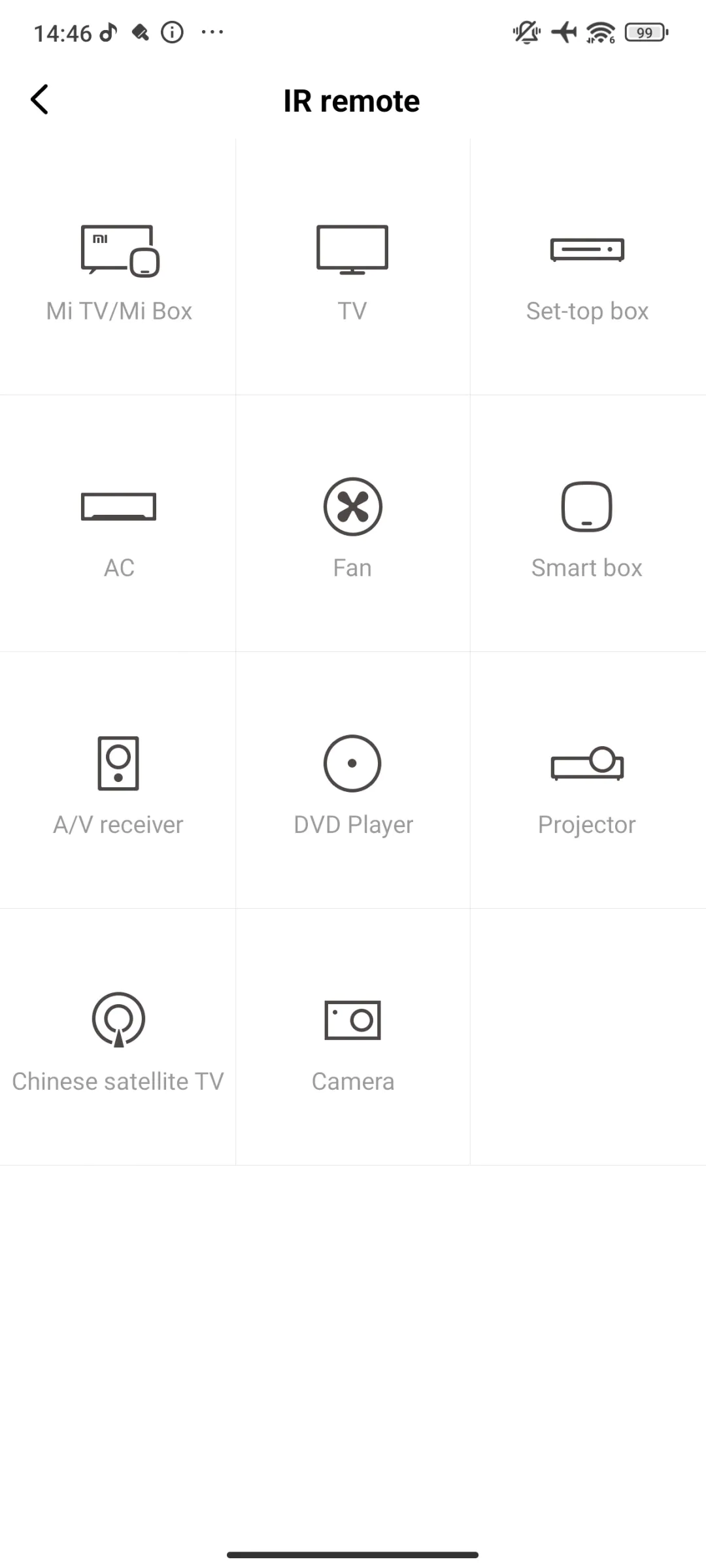
Software
Xiaomi 13T Pro runs on Android 13 with MIUI 14. Xiaomi promises four major Android updates and 5 years of security patches for the 13T series.
The system works smoothly, intuitively, and offers the user a large number of settings and additional security features, including emergency alert modes. There is also parental control and digital balance.
You can open programs in floating windows or in a split window. But there is a limitation: only one floating window at a time. If you need quick access to apps, turn on the sidebar.
In general, I don’t specifically customize the system for myself, because it’s good enough as it is. Xiaomi 13T Pro is no exception, going into the settings, you can easily find the functions you need. MIUI is now clear and fast, so there were absolutely no problems here.
Read also: Xiaomi 13 smartphone review: almost perfect
Battery, autonomy
If we compare devices across the entire tech market, we can see that gadgets in both the mid-budget segment and flagship models have batteries with a capacity of ± 5000 mAh. However, this does not mean that they show the same performance and provide the same reliability and operating time.
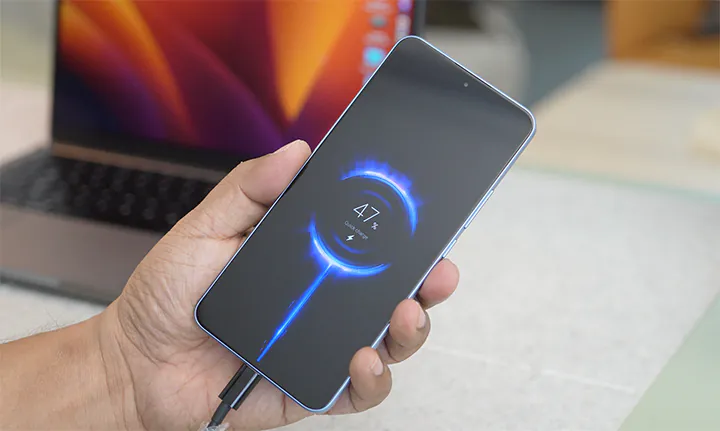
Xiaomi 13T Pro is no exception, it has a standard battery, but what’s nice is the powerful charger included (120W, GaN). In 25 minutes you will charge the gadget to 100% – a great result! 35% can be achieved in 5 minutes.
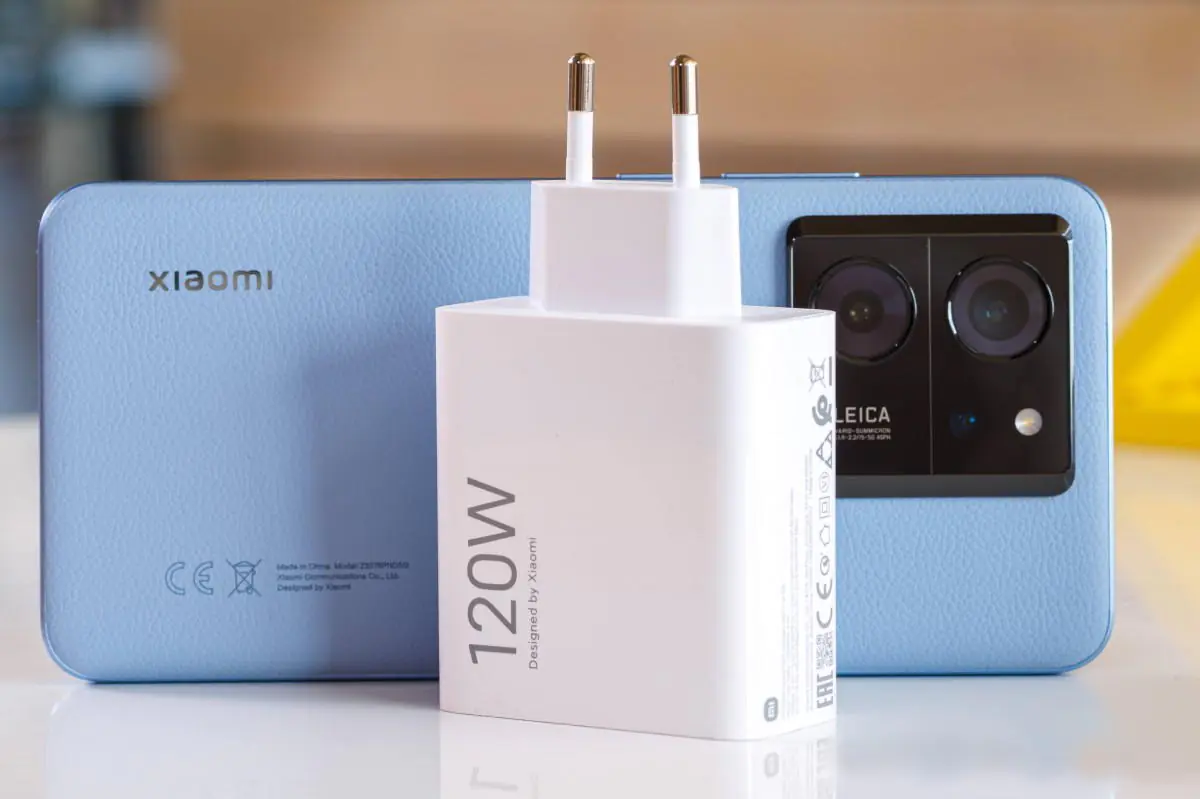 In the settings, you will find the Boost Charge option, which allows for the fastest charging at 120 watts, but only when the screen is off to prevent overheating. This option is disabled by default. We tested charging in Boost mode, and indeed, with the screen on, charging is limited to 60-80 watts. But during a 120W fast charge, the phone did not overheat, it was only warm.
In the settings, you will find the Boost Charge option, which allows for the fastest charging at 120 watts, but only when the screen is off to prevent overheating. This option is disabled by default. We tested charging in Boost mode, and indeed, with the screen on, charging is limited to 60-80 watts. But during a 120W fast charge, the phone did not overheat, it was only warm.
Even though the gadget has powerful hardware and a powerful camera system, this does not prevent Xiaomi from working for a long time and not slowing down. During testing, the model lasted about 1.5 days from charge to charge. It’s worth noting that I didn’t play games on this phone, so the battery life increased. Basic tasks were no problem for the 13T – I watched videos and surfed the Internet, communicated in instant messengers and social networks, edited text for a review, and took photos throughout the day to illustrate the quality of the cameras.
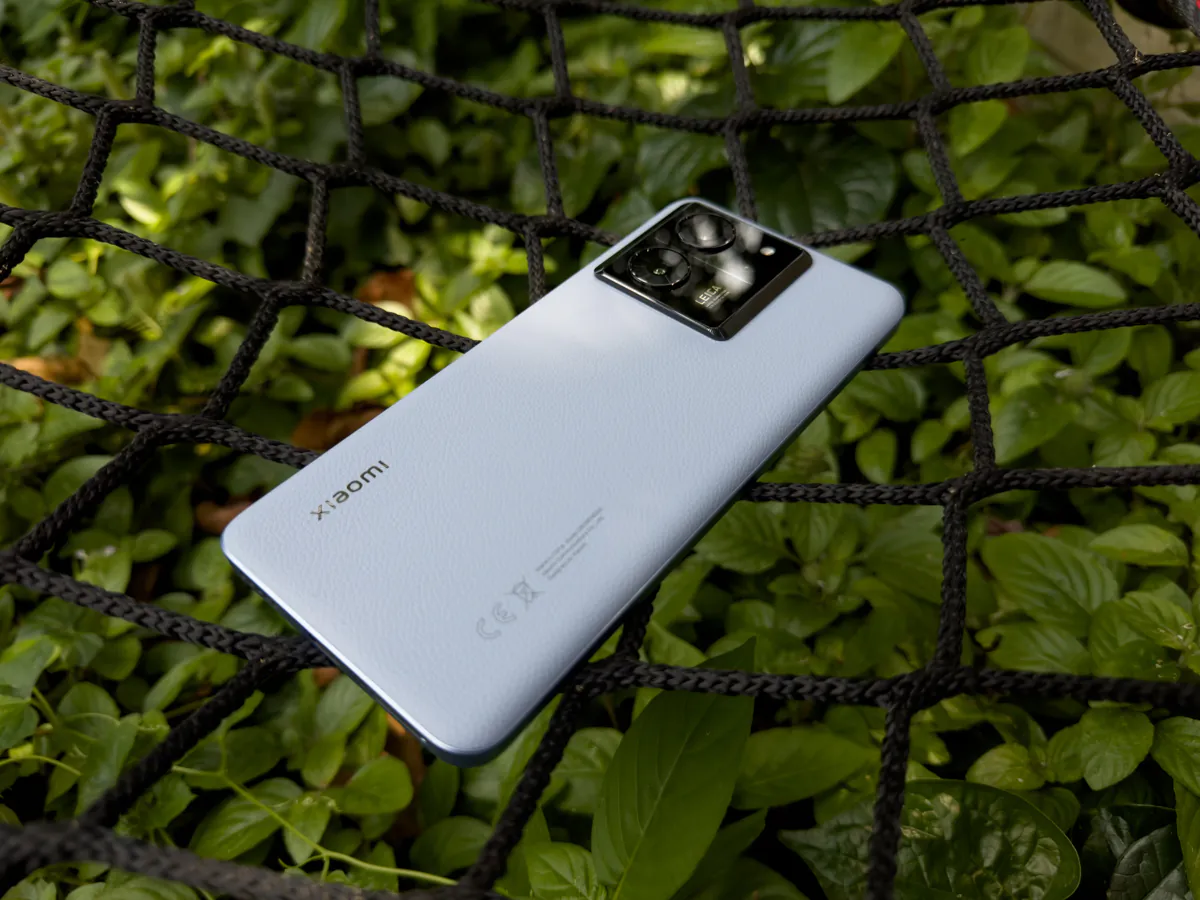
To conclude this section, I would like to note that the phone is doing a great job – it works for a long time and charges quickly, which is the most important thing right now.
Read also: Xiaomi Buds 4 Pro review: great sound and high-quality noise cancellation
Conclusion
Xiaomi 13T Pro offers a good set of features for any task. The design is good (cool additions are IP68 moisture protection and an eco-leather version), the system does not slow down (so there are improvements over the 13 Pro), Leica cameras shoot well even at night, the screen is high-quality, the stereo speakers are powerful, the battery lasts quite a long time, and the kit includes a charger that will “feed” your device 100% in 25 minutes!
I won’t say that this is the best phone on the market. Of course, it also has disadvantages that are somehow “hidden” in this segment, namely plastic in the body, MTK processor, lack of wireless charging and a more powerful zoom in the camera. However, none of this matters much, because the price is not sky-high. Therefore, we advise you to take a closer look at Xiaomi 13T.
Read also:
- Personal experience: Why I sold my iPhone 14 Pro Max and bought a Galaxy S23 Ultra
- Samsung Galaxy Flip5 vs Motorola Razr 40 Ultra: Battle of two yokozunas
- Introduction to Huawei Watch Ultimate Design: 18-carat gold and $3000


